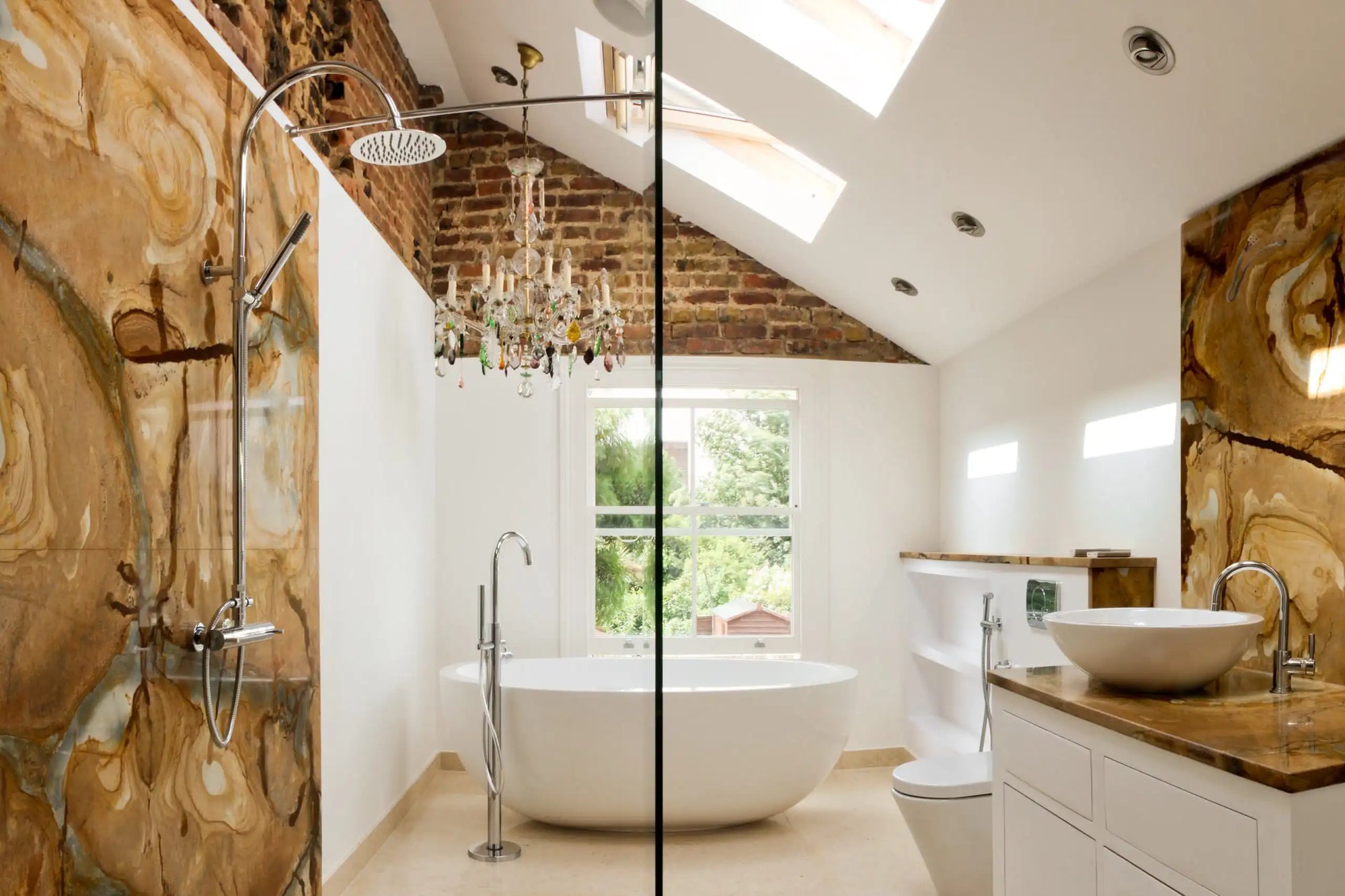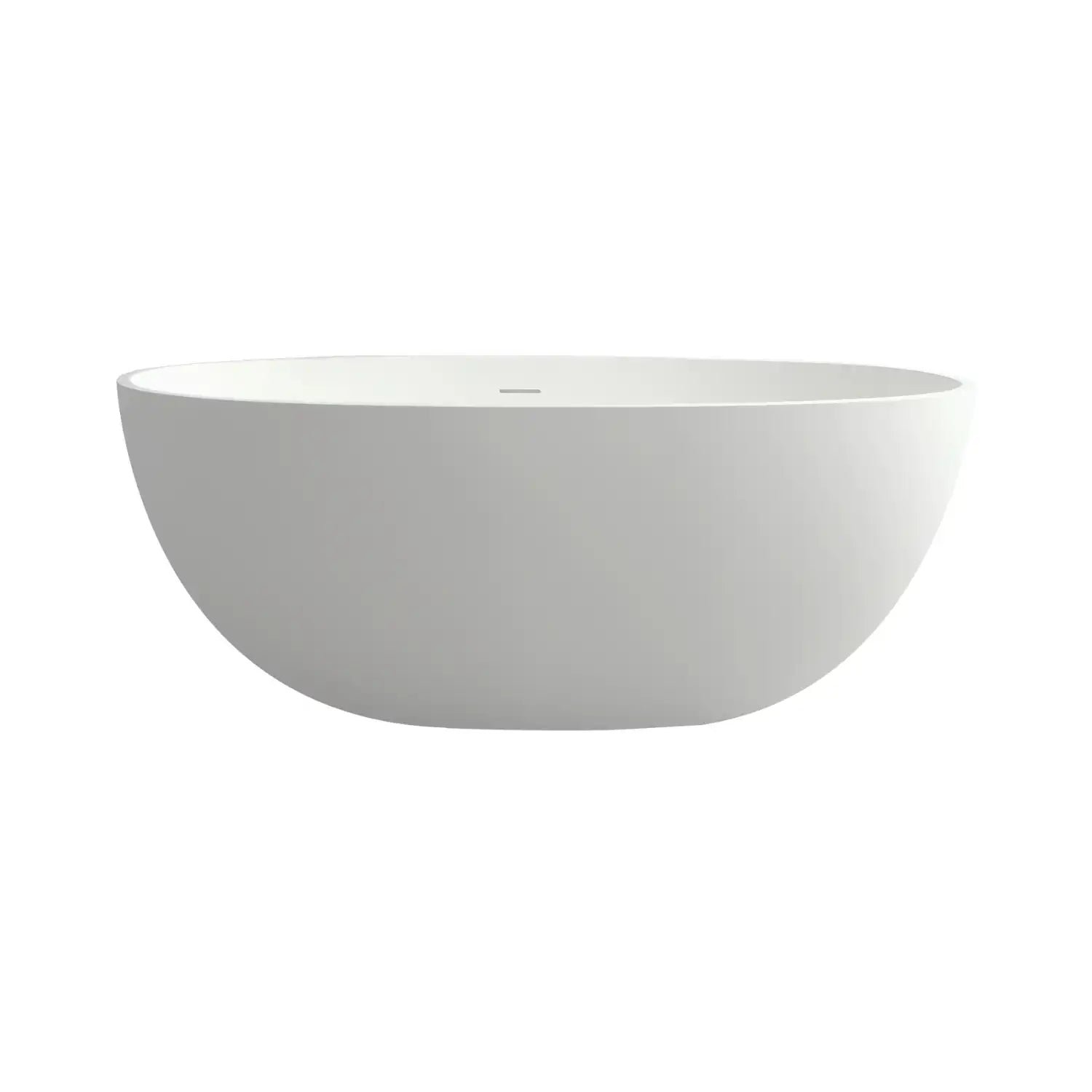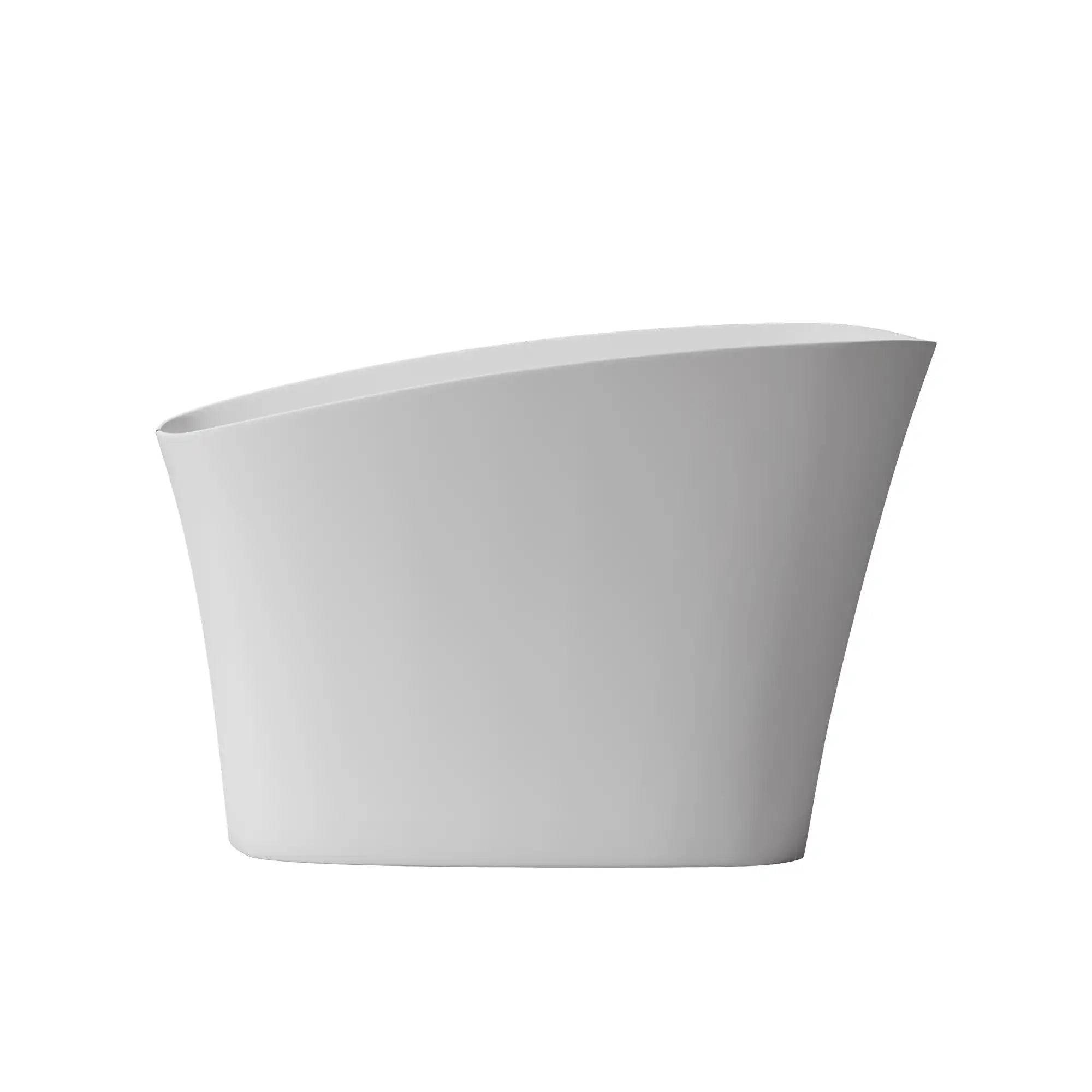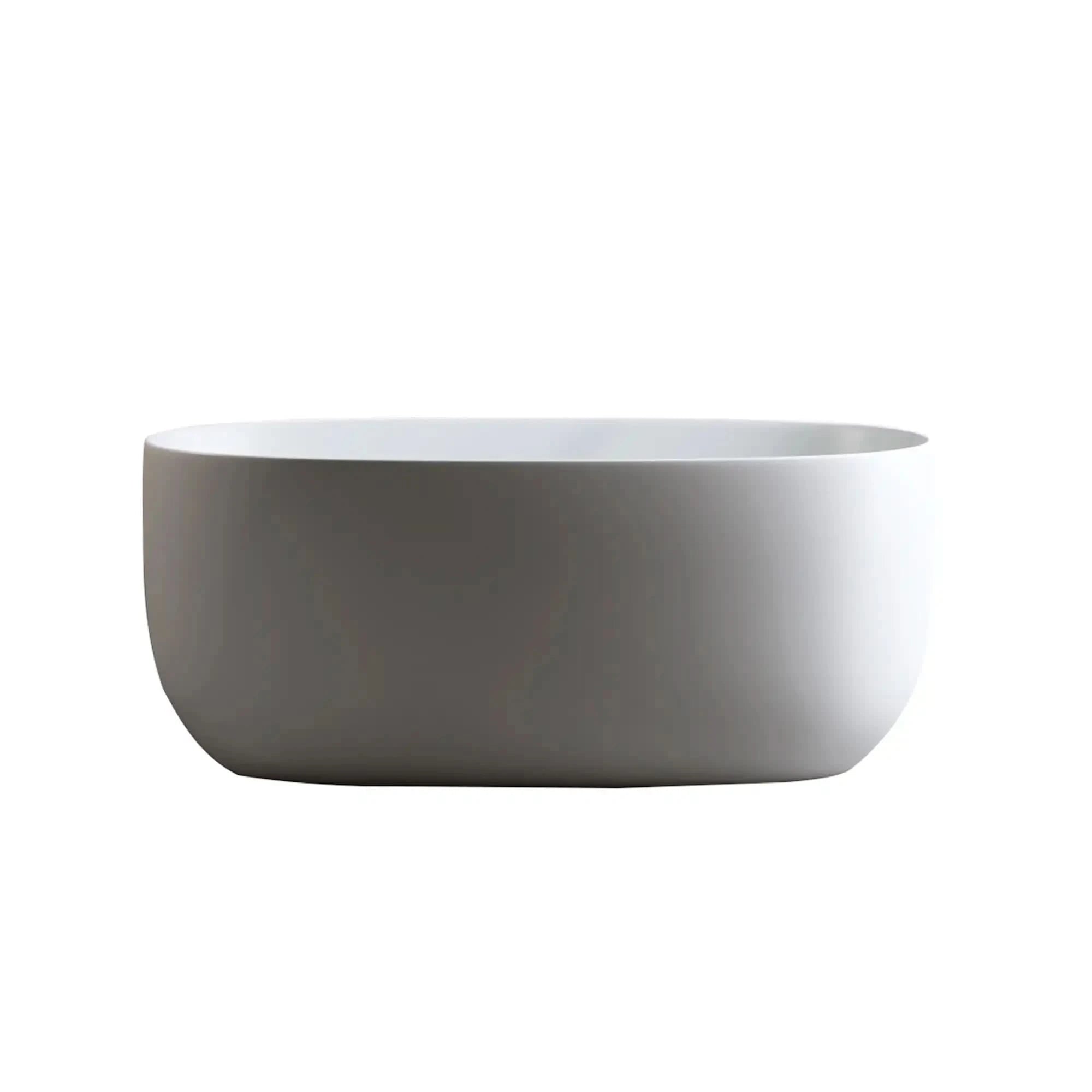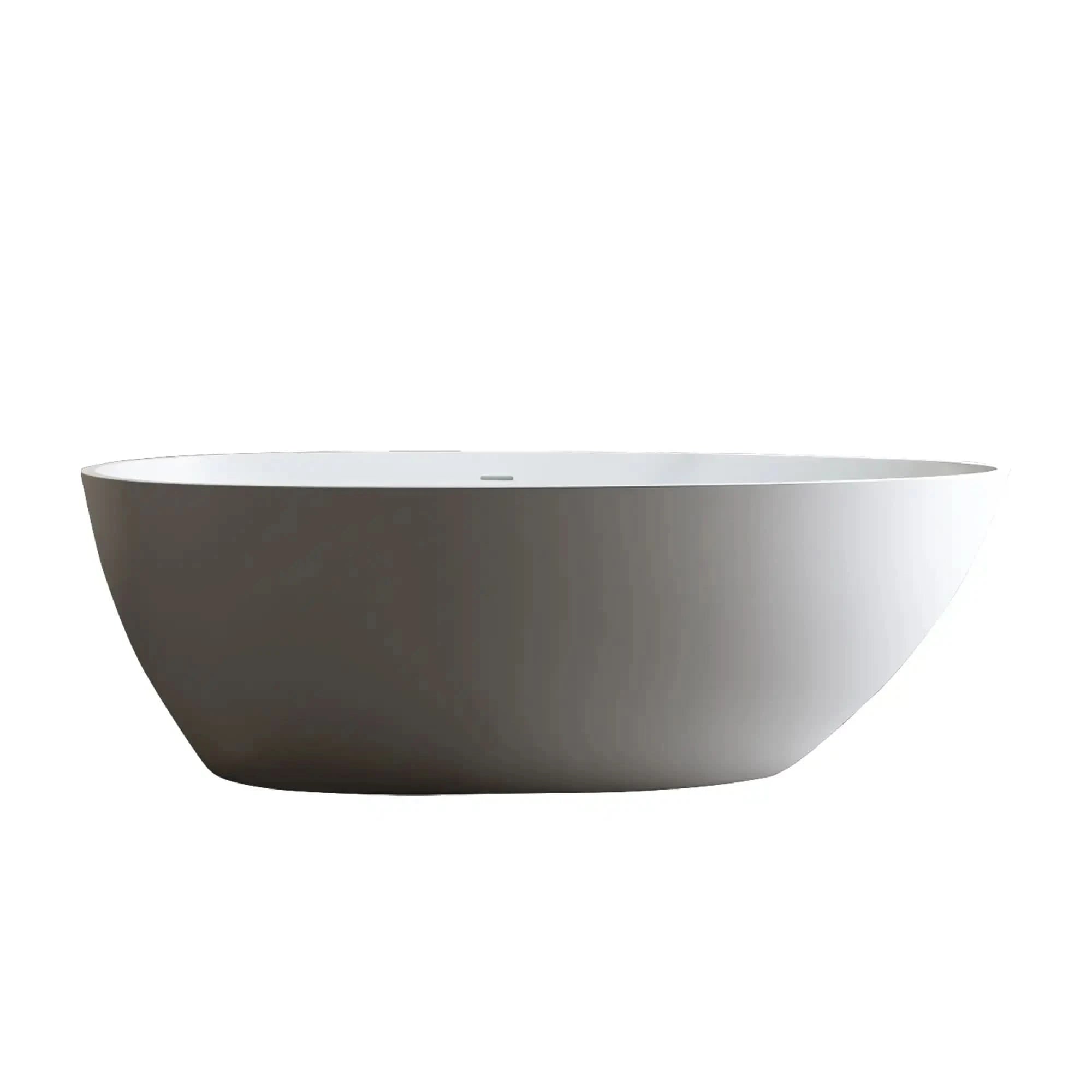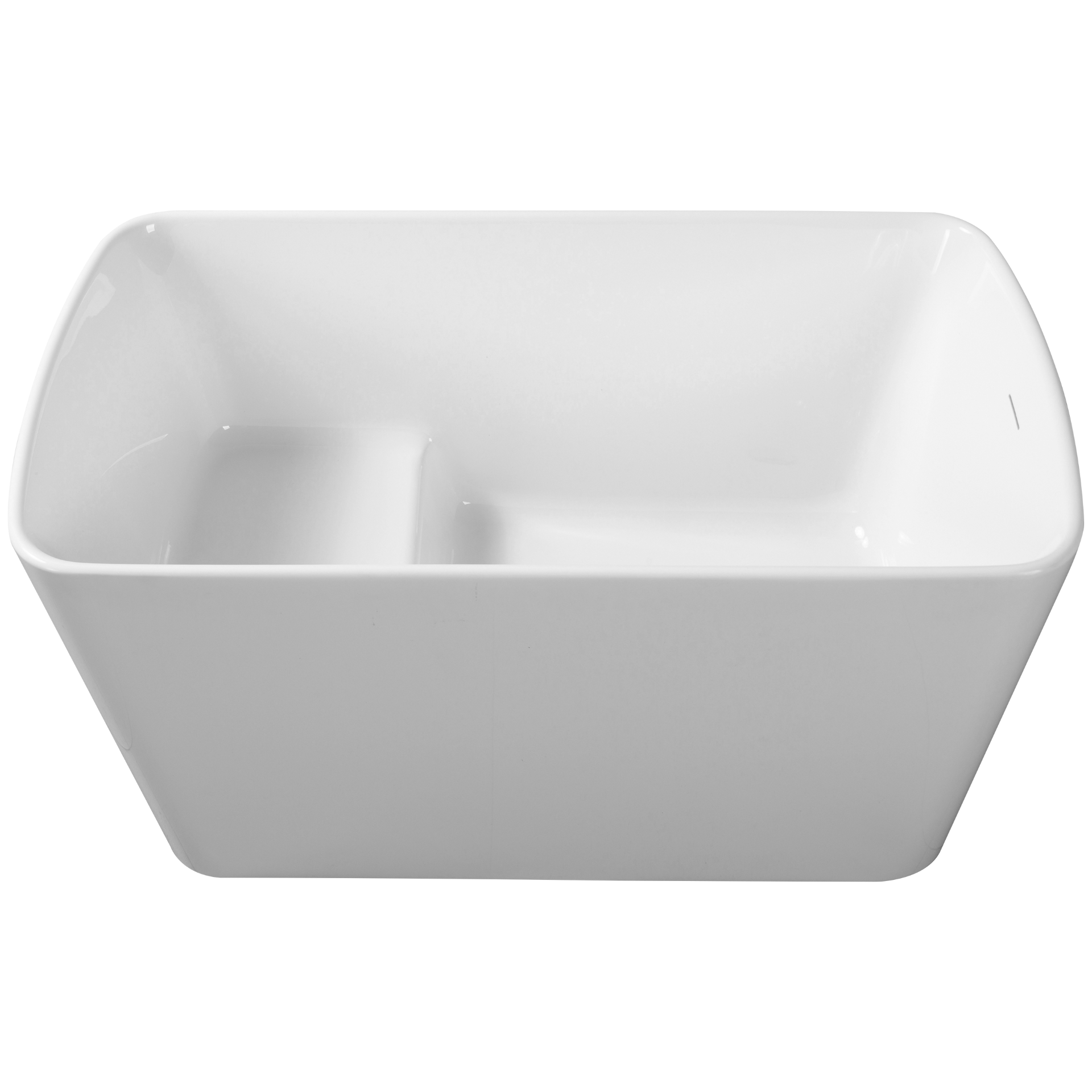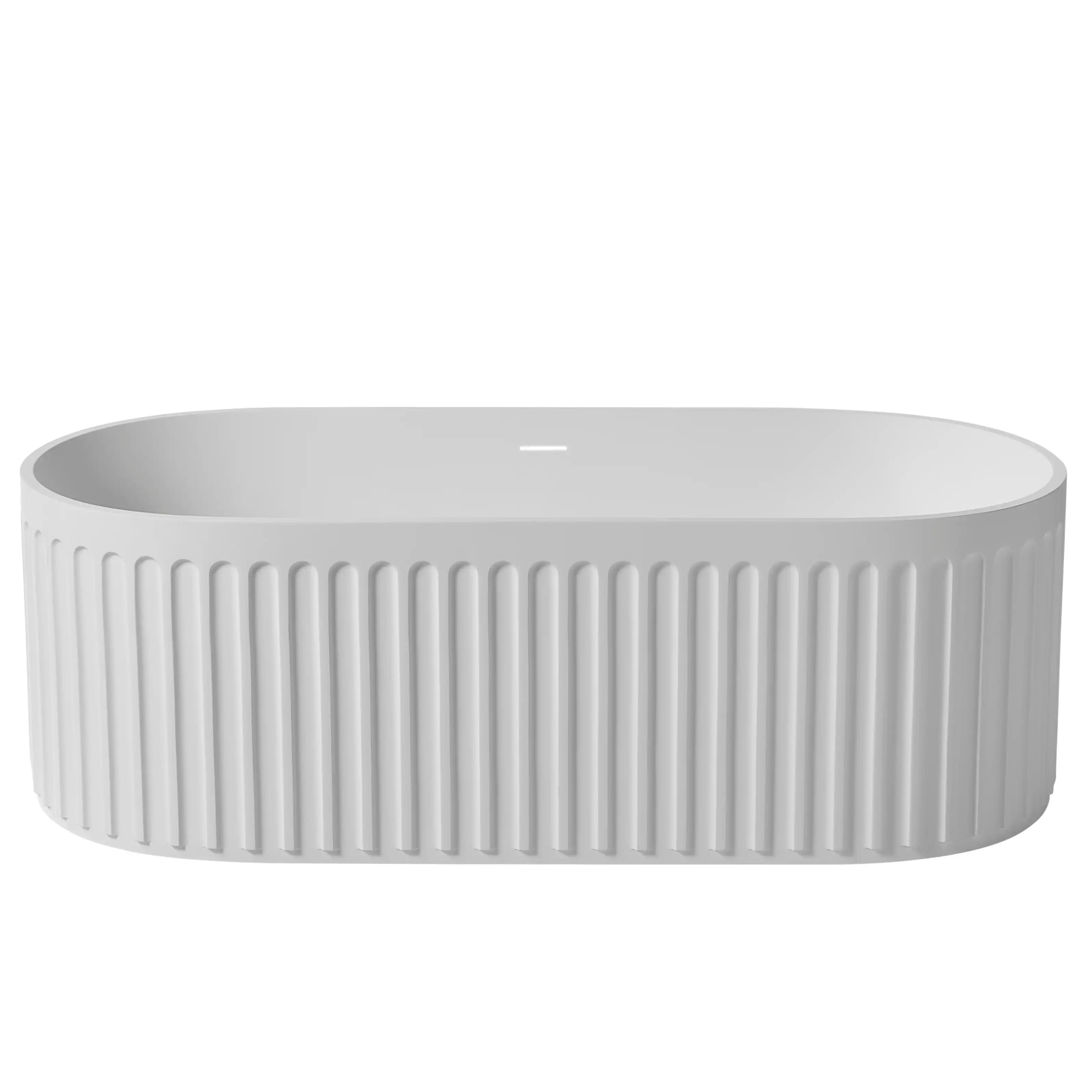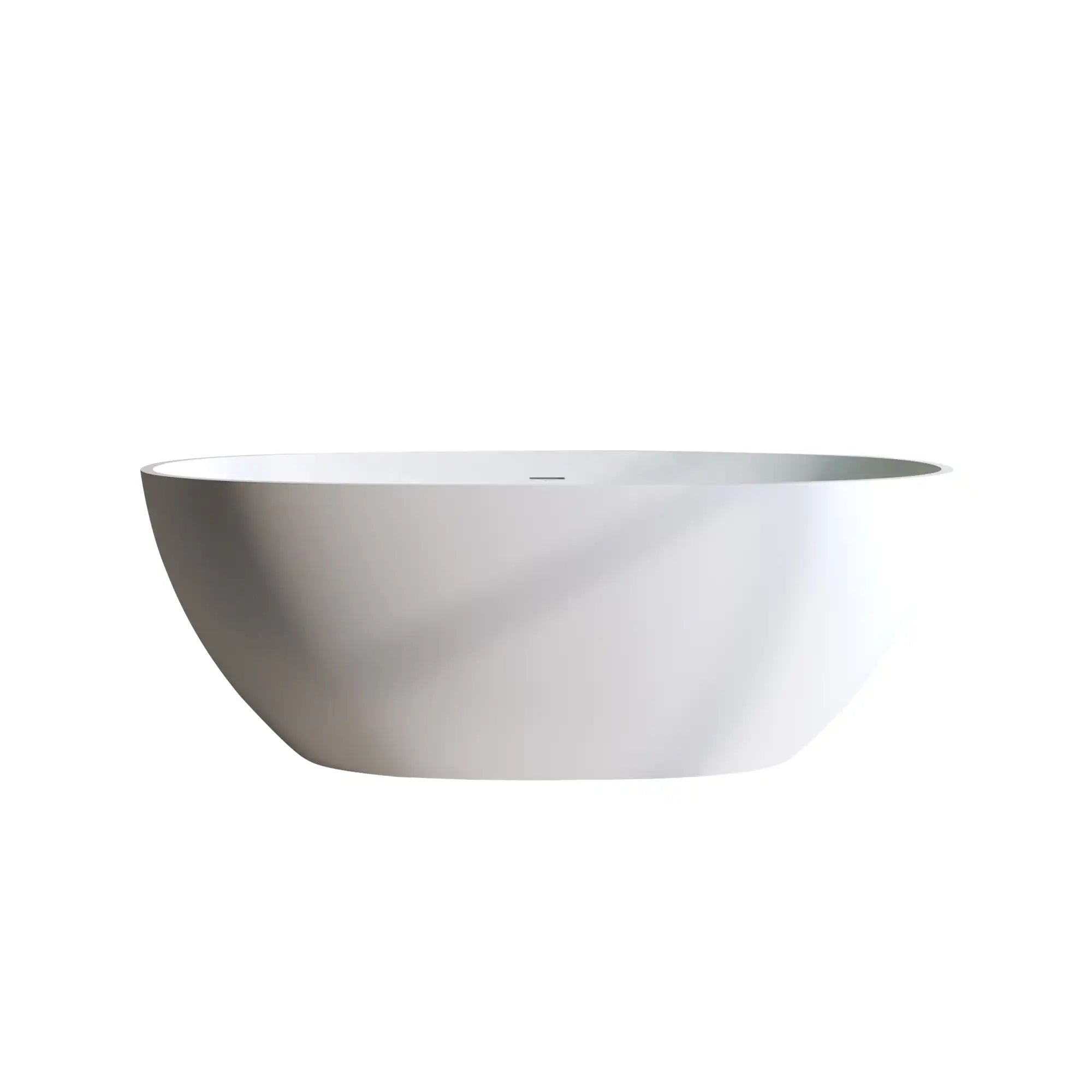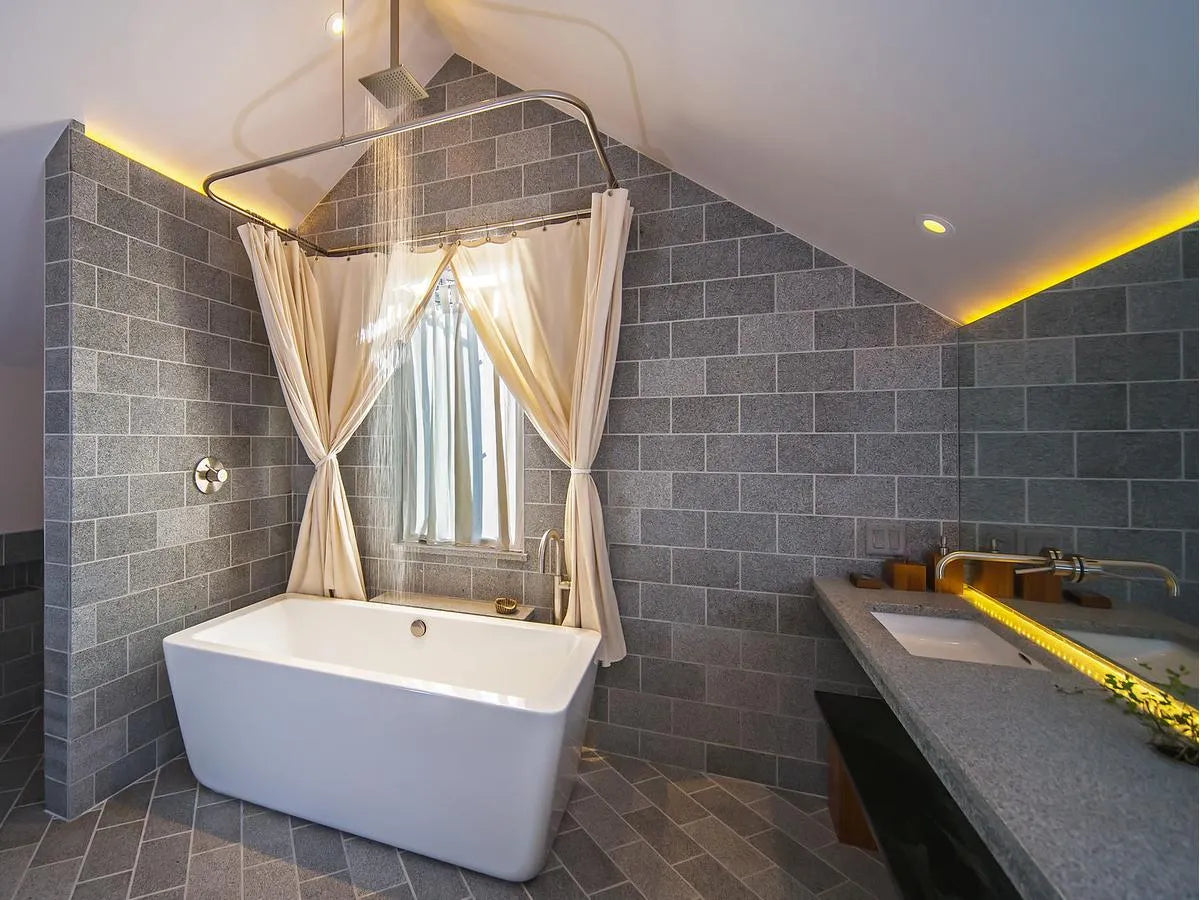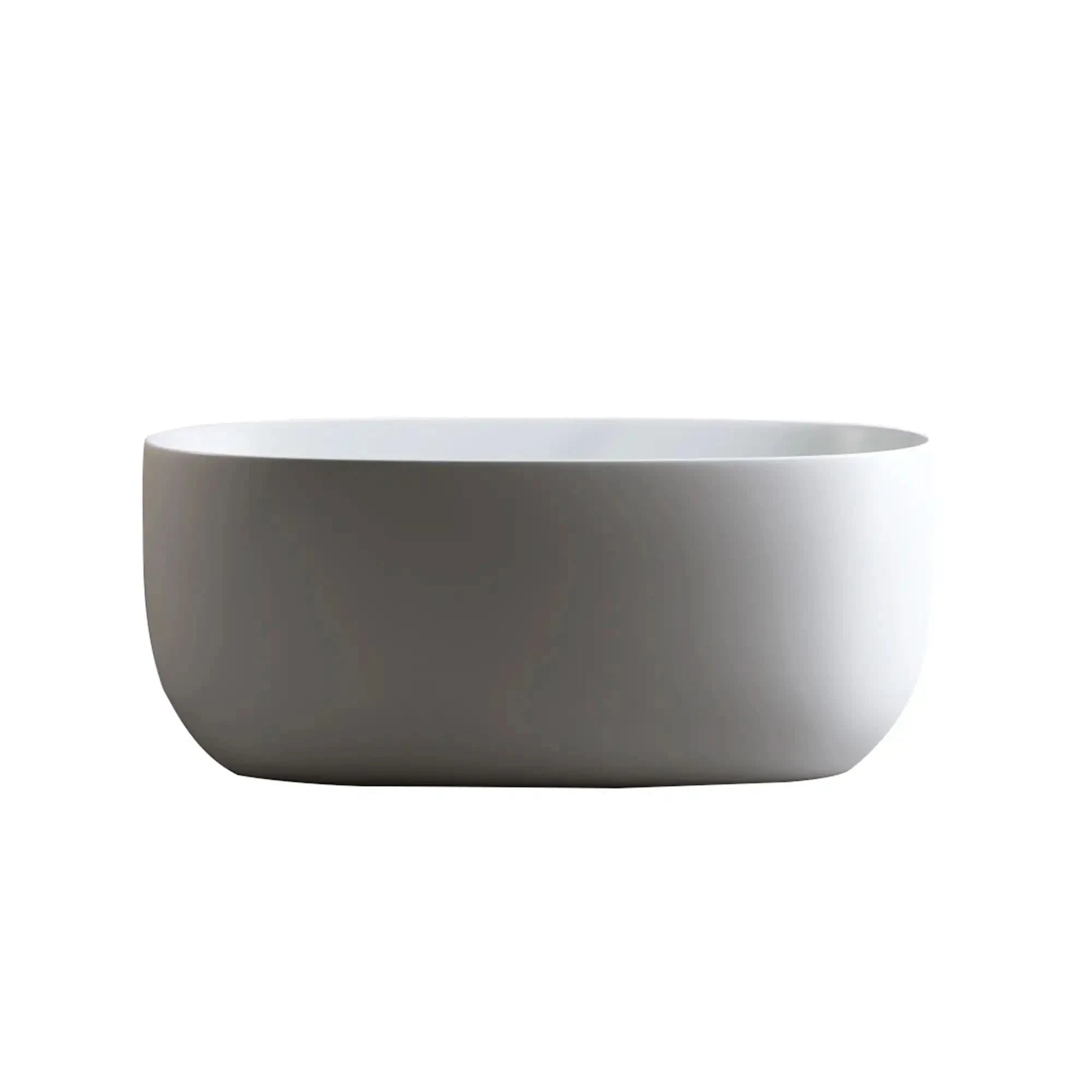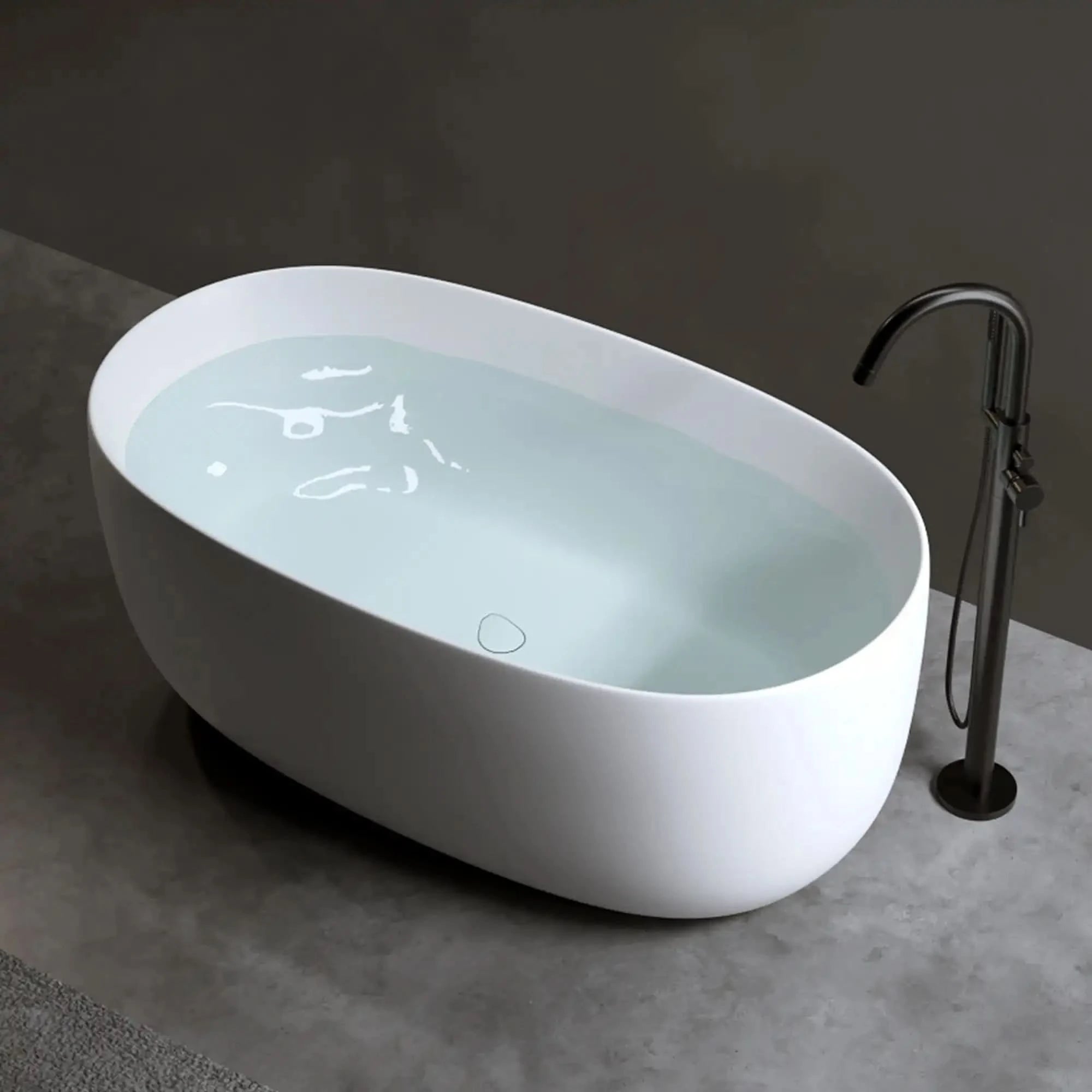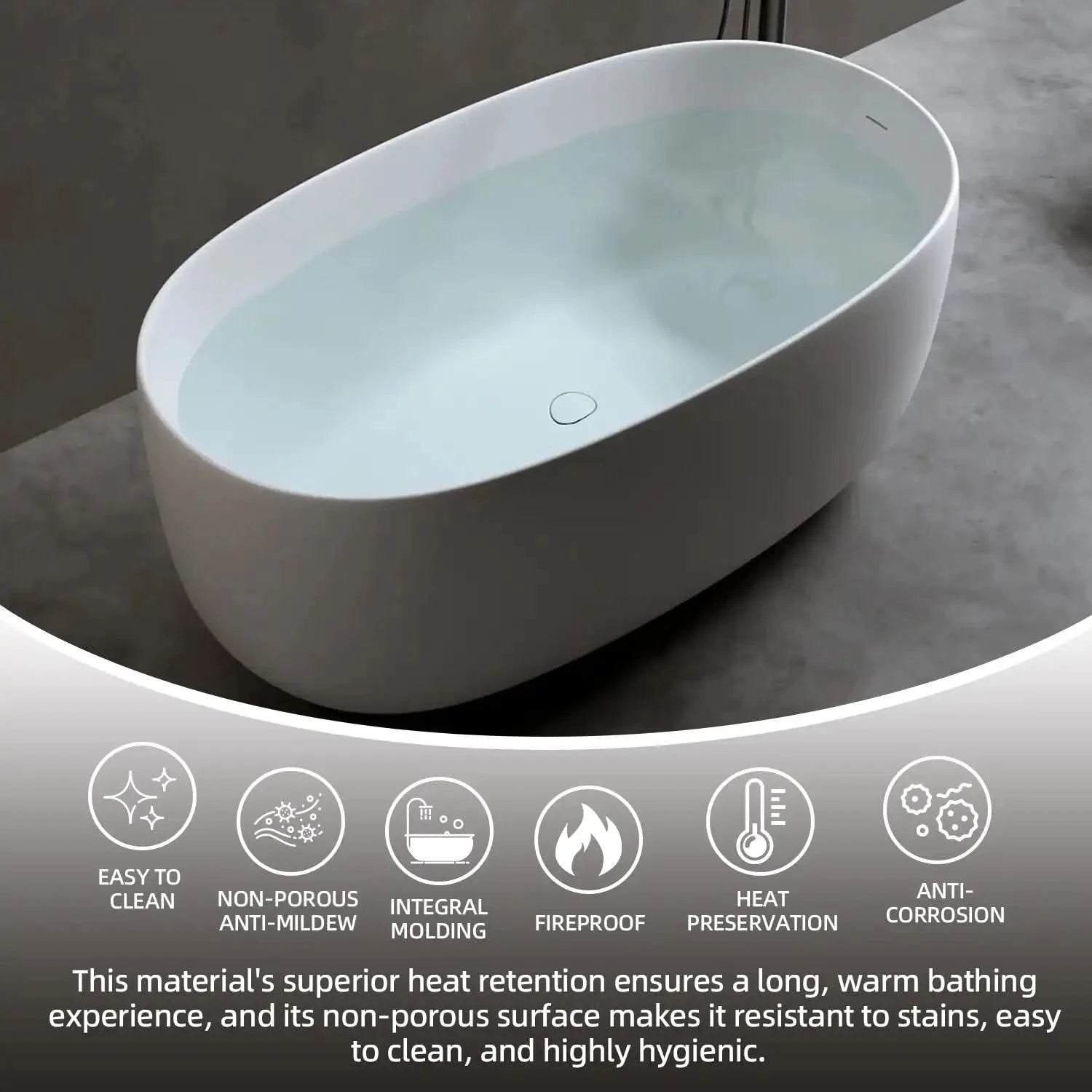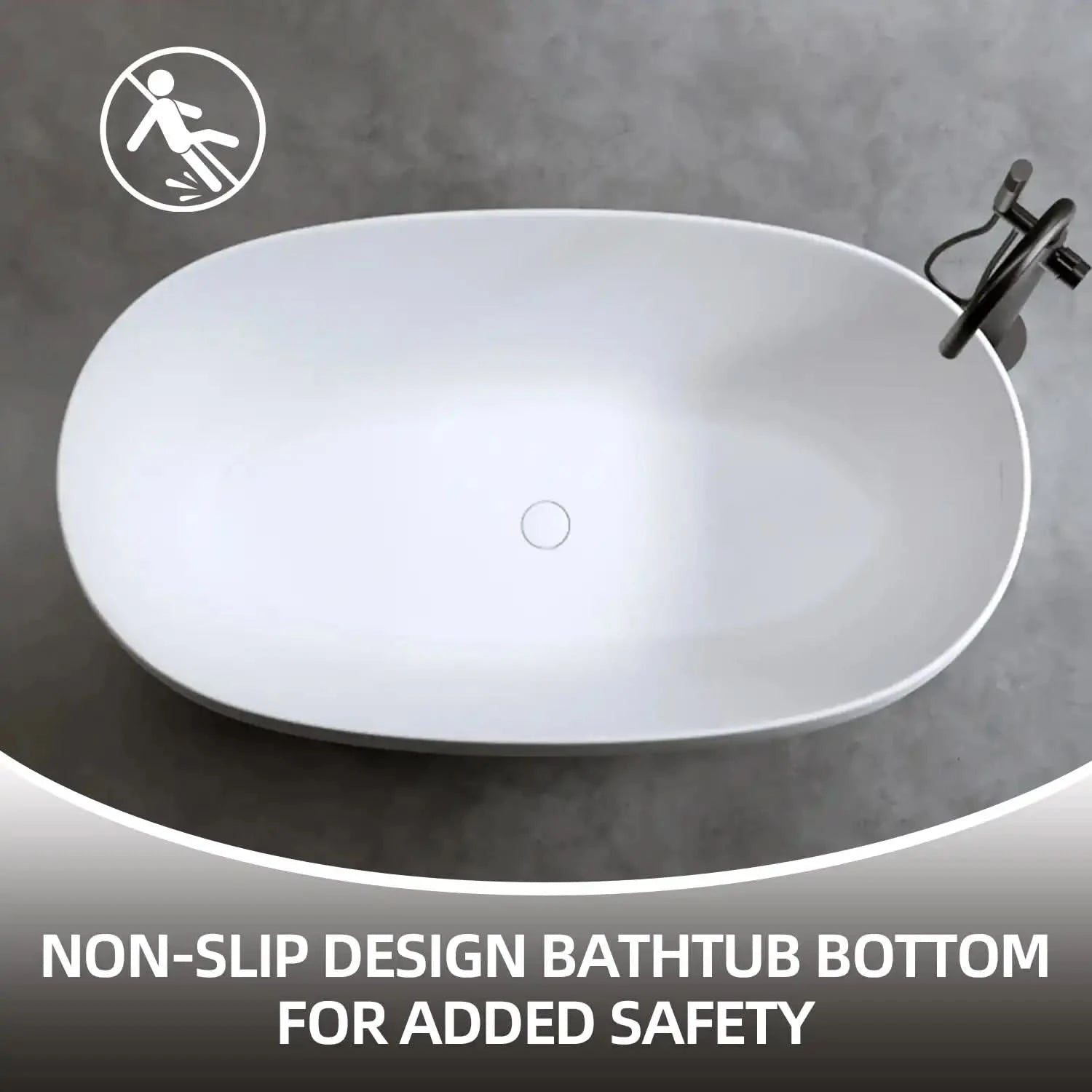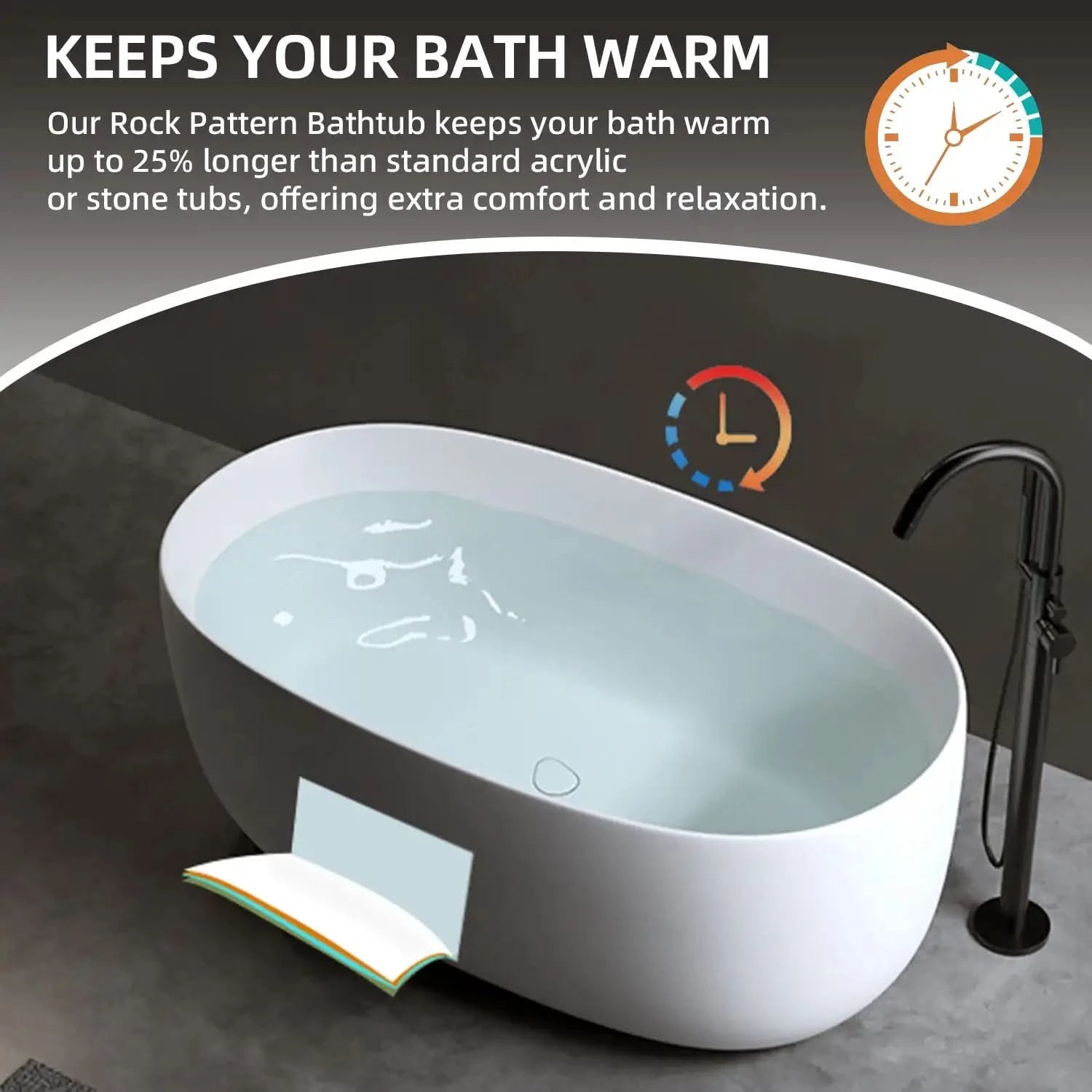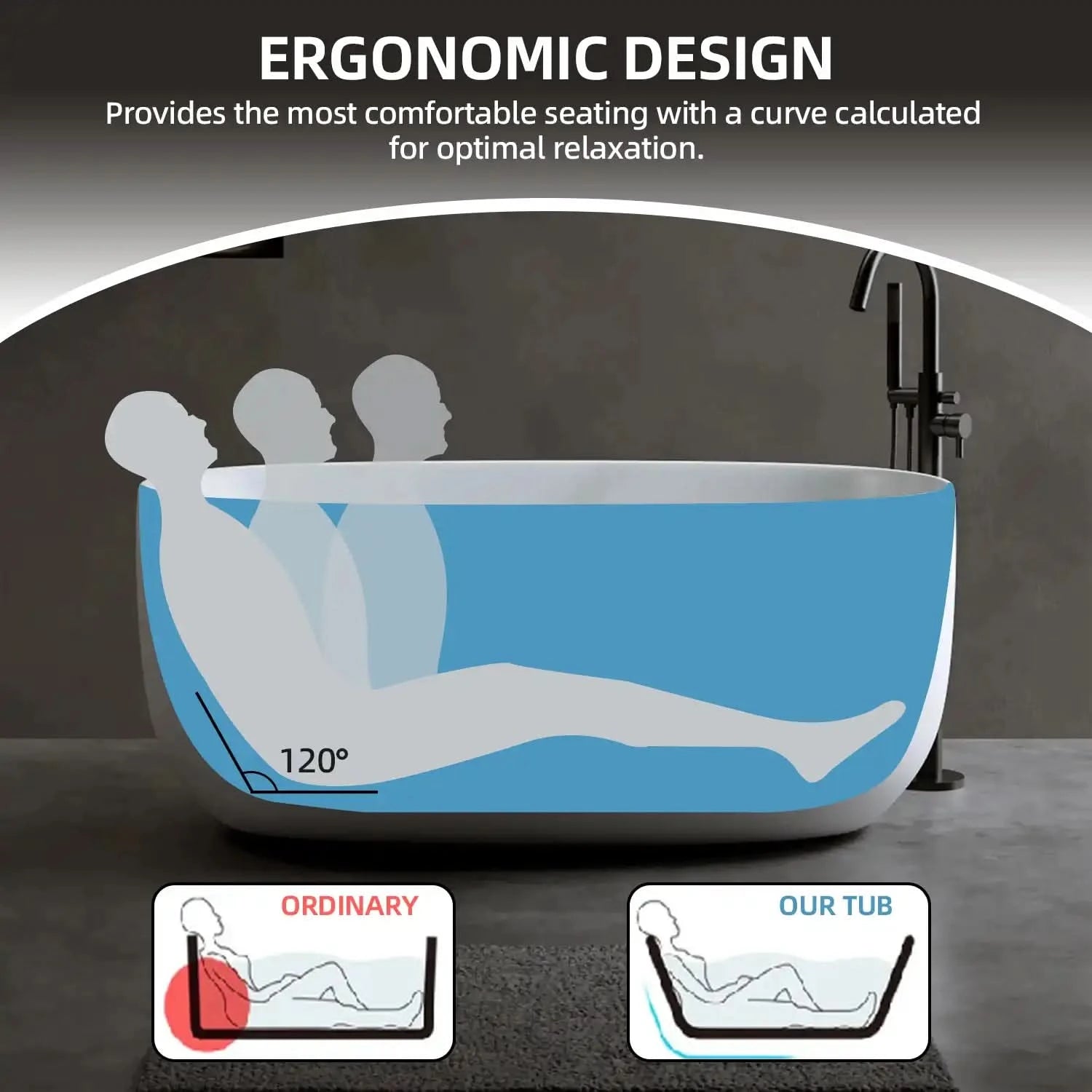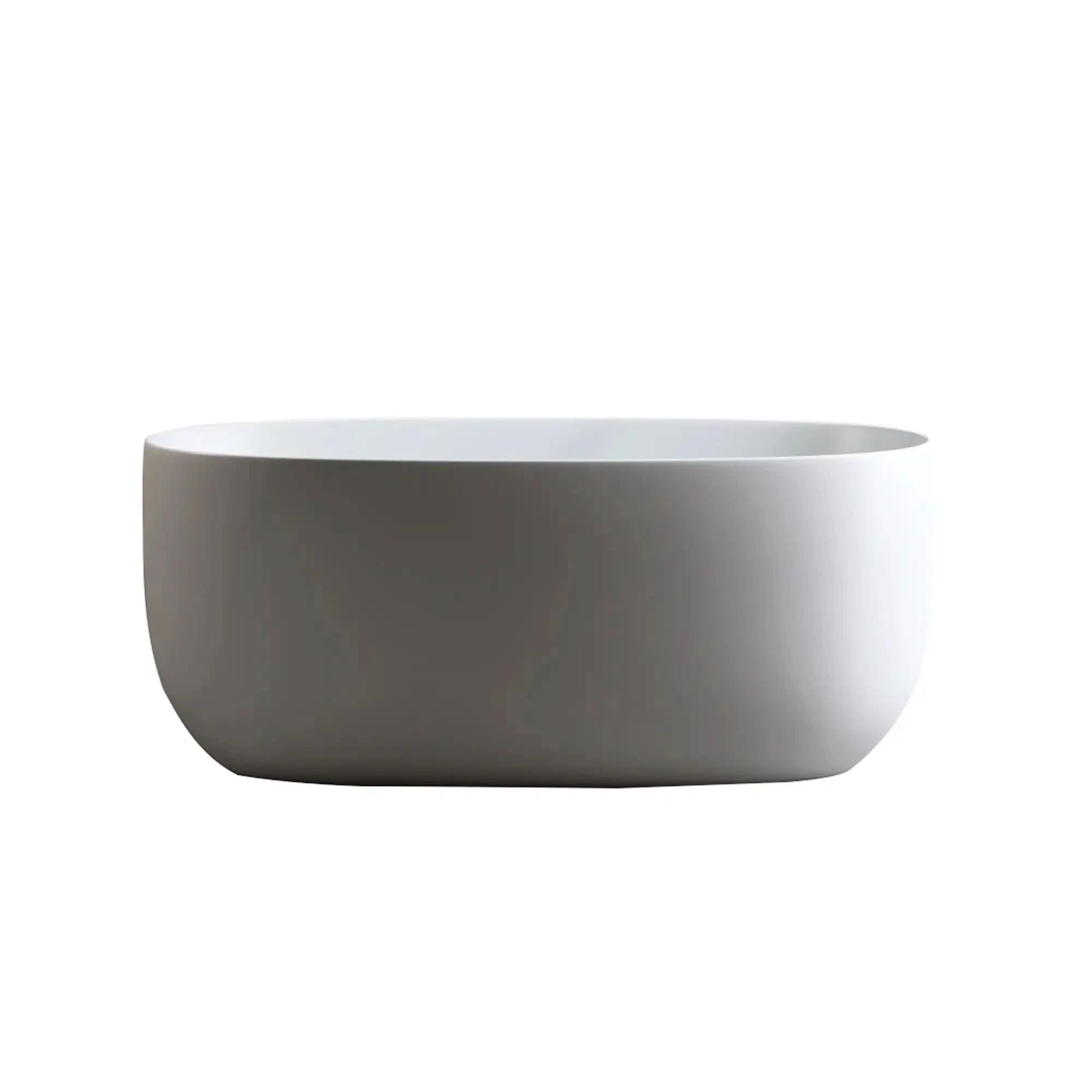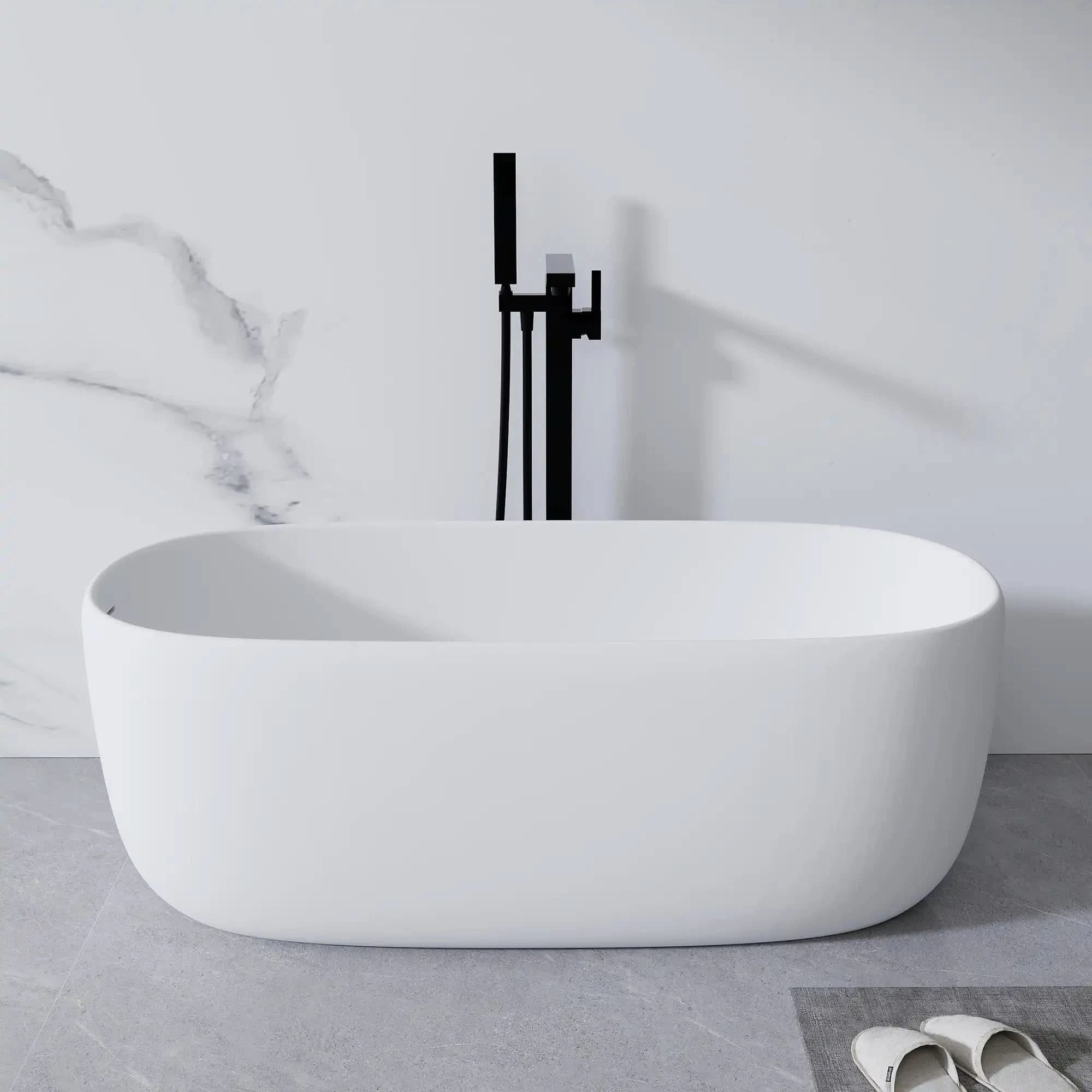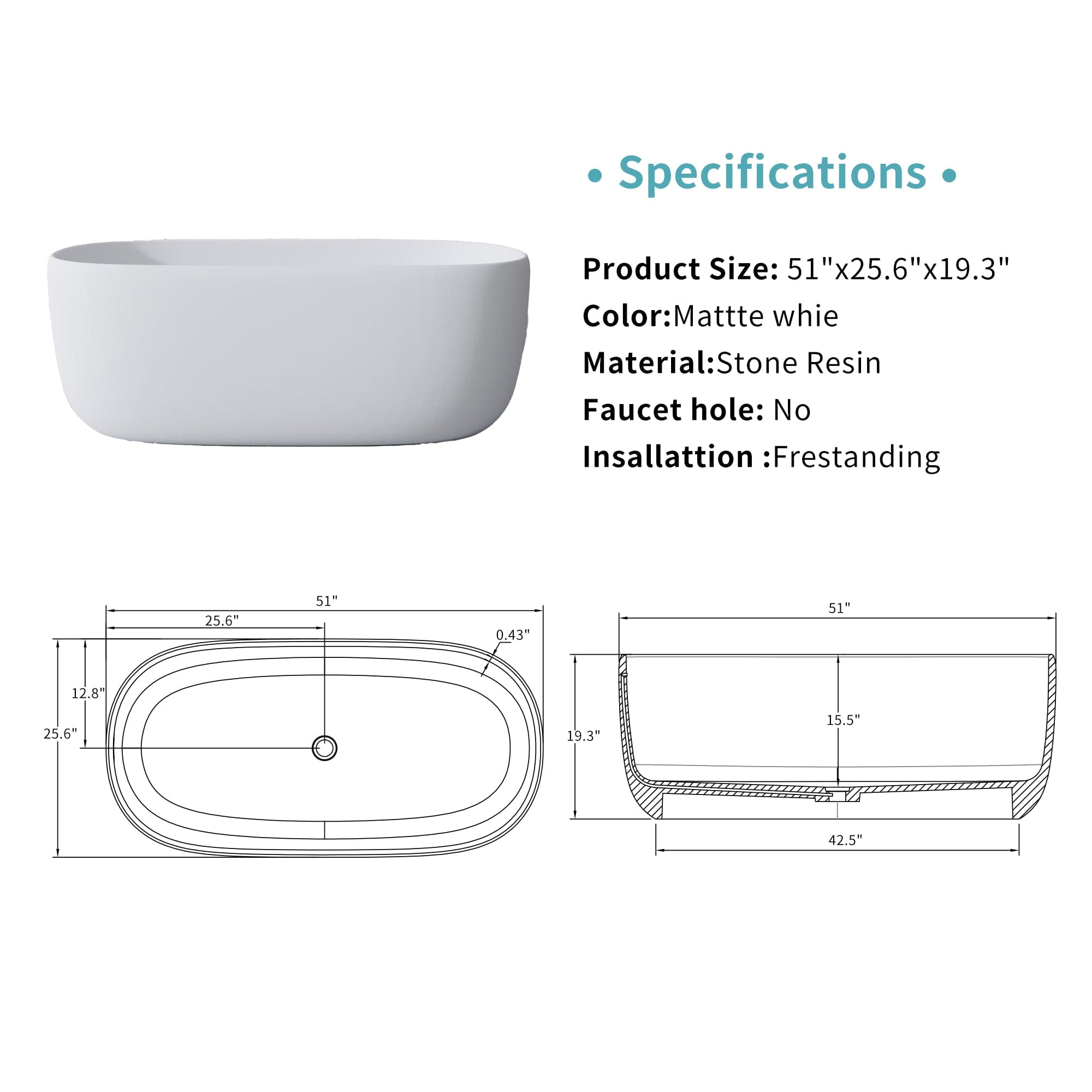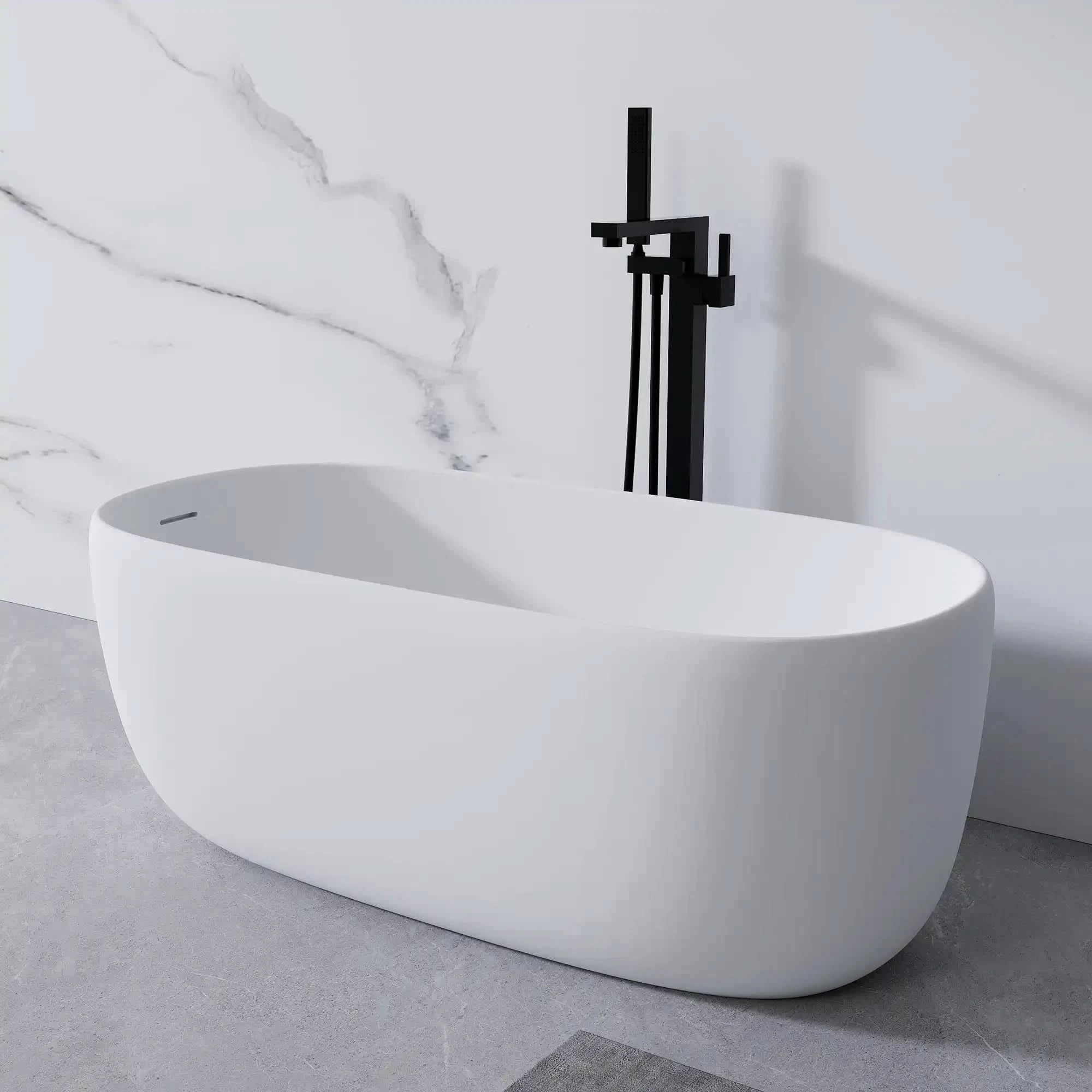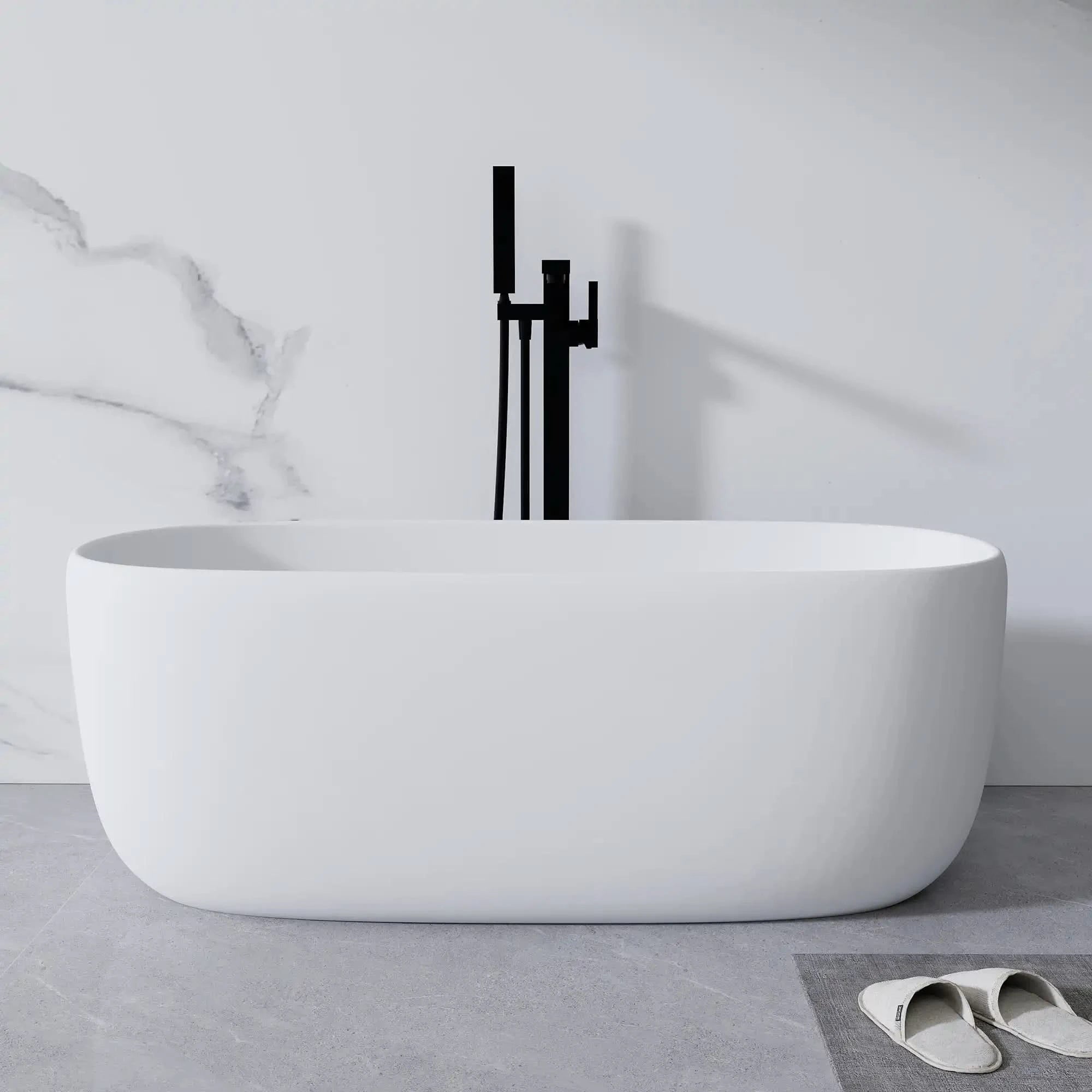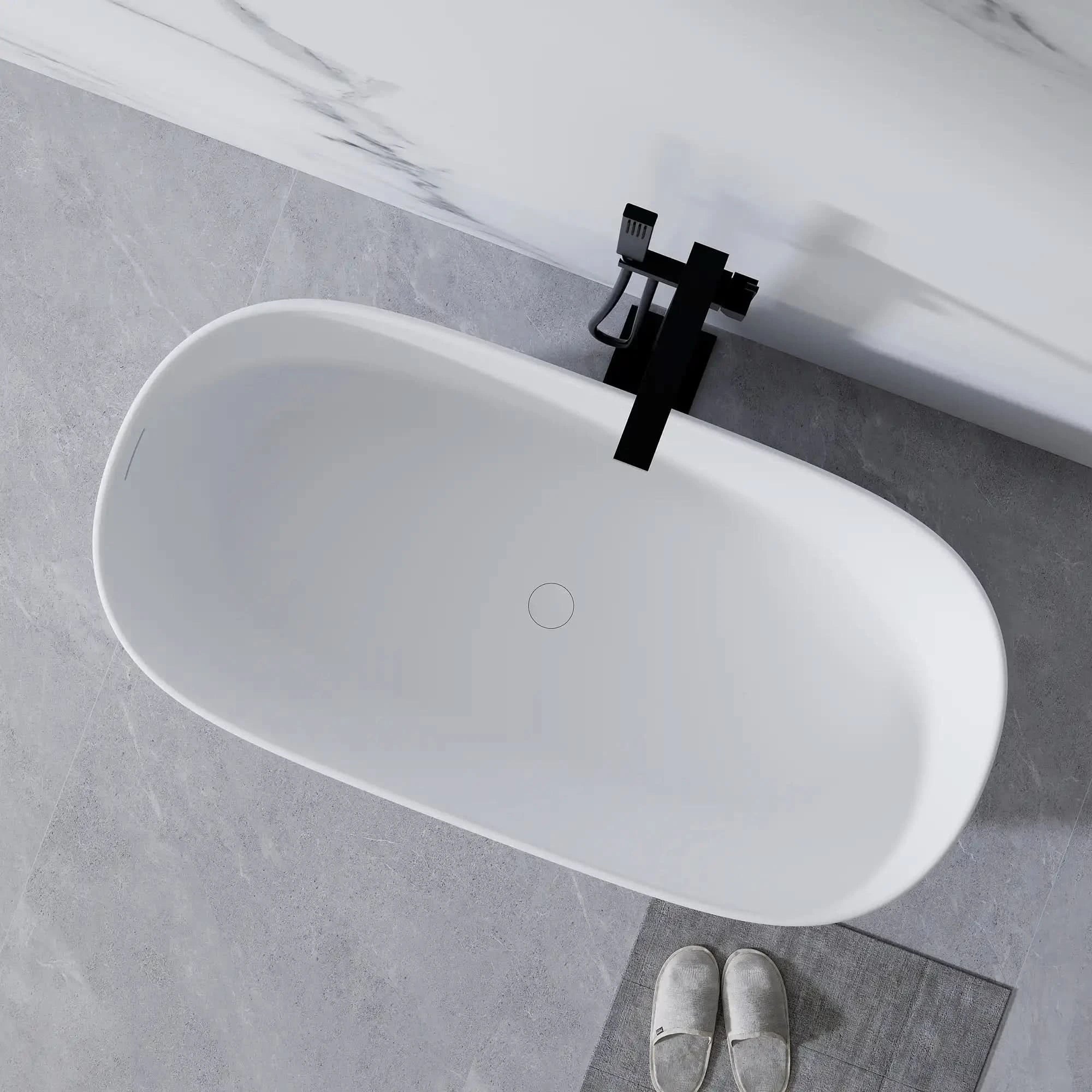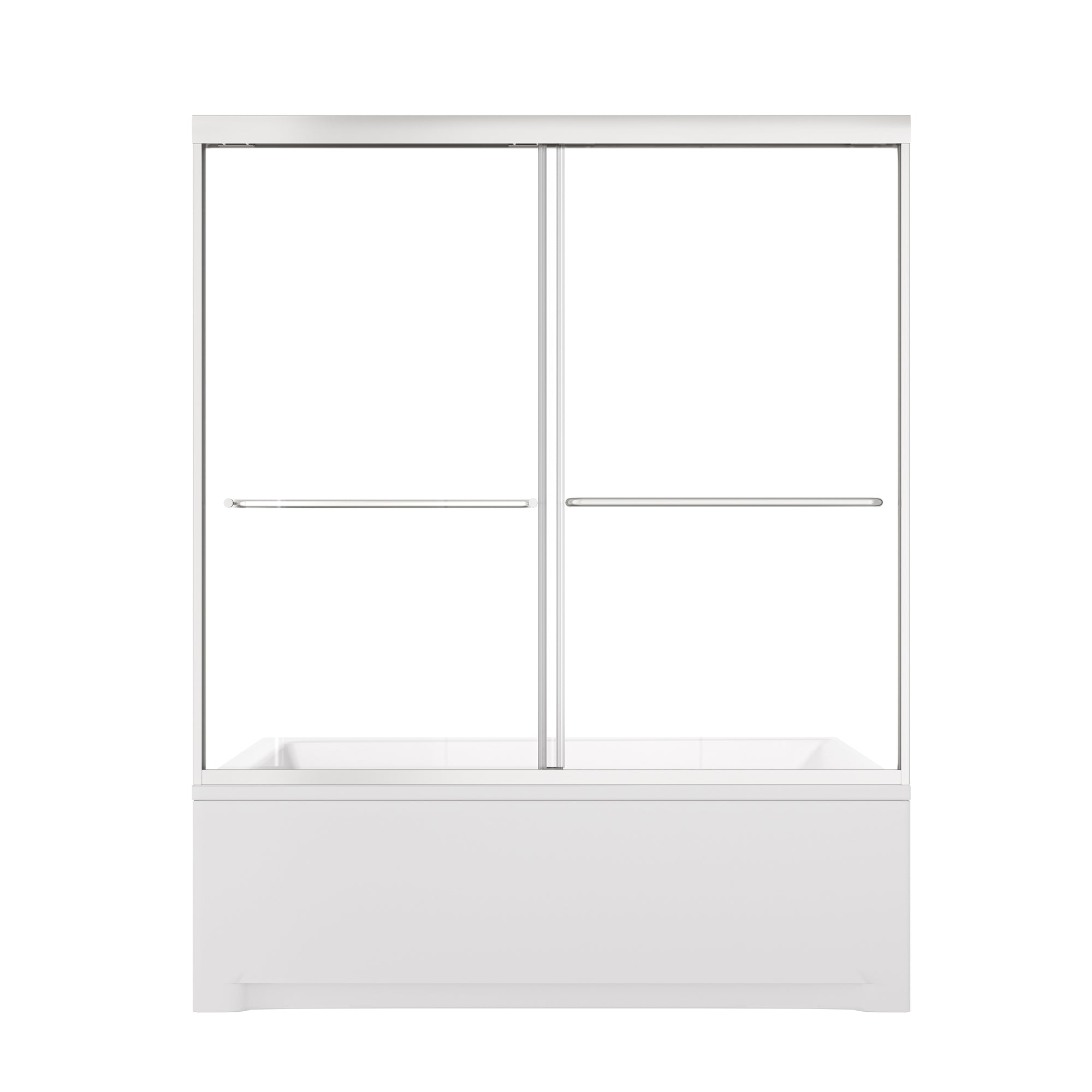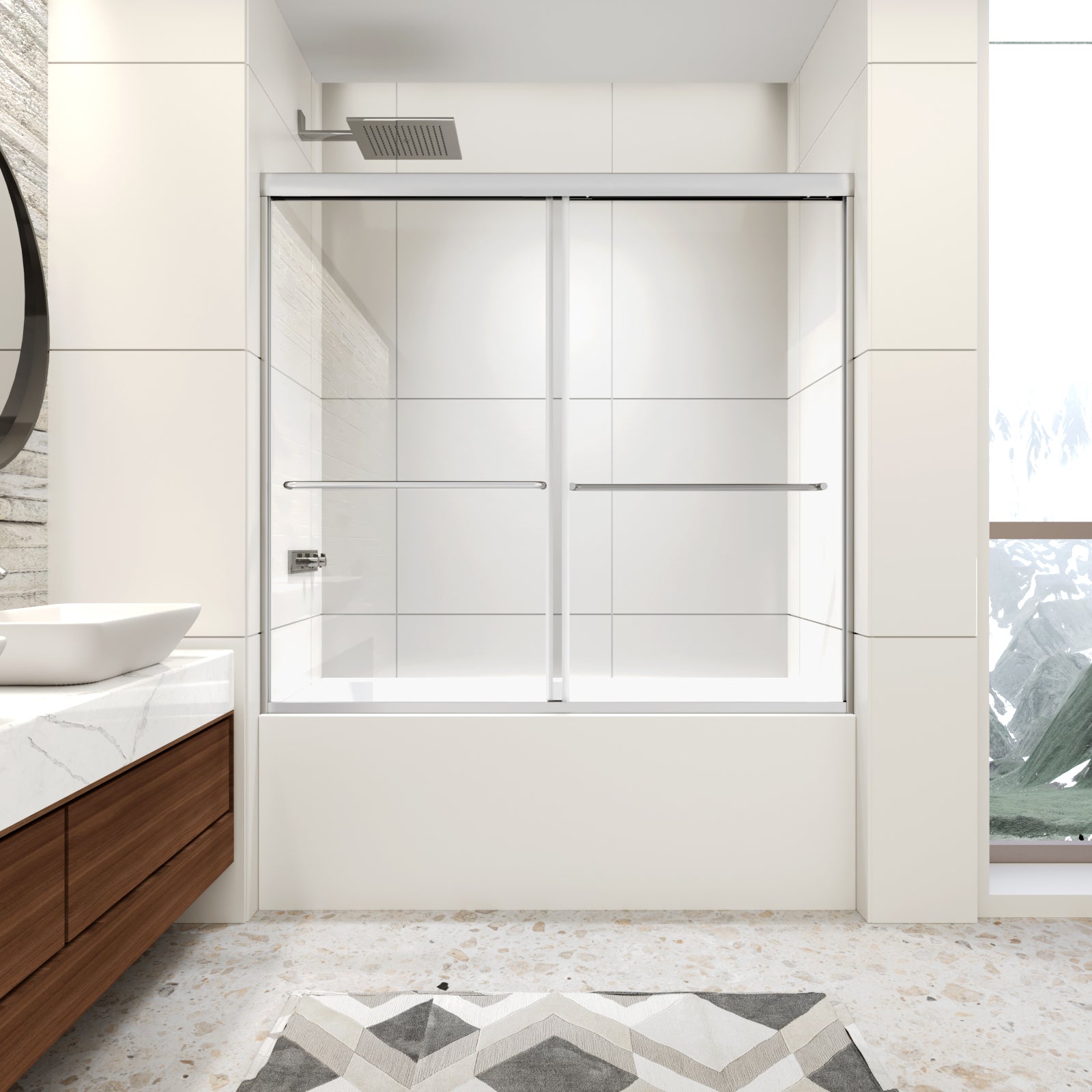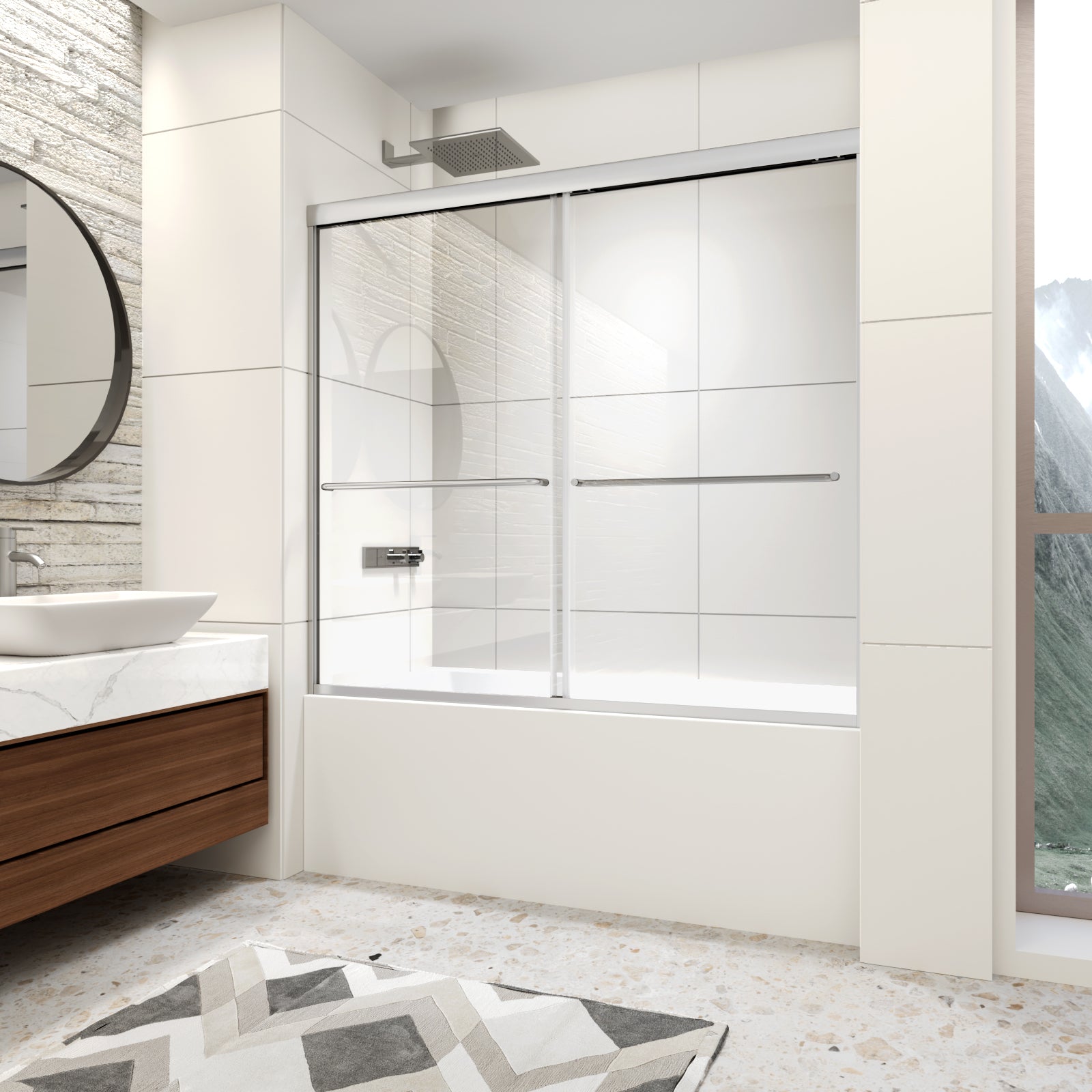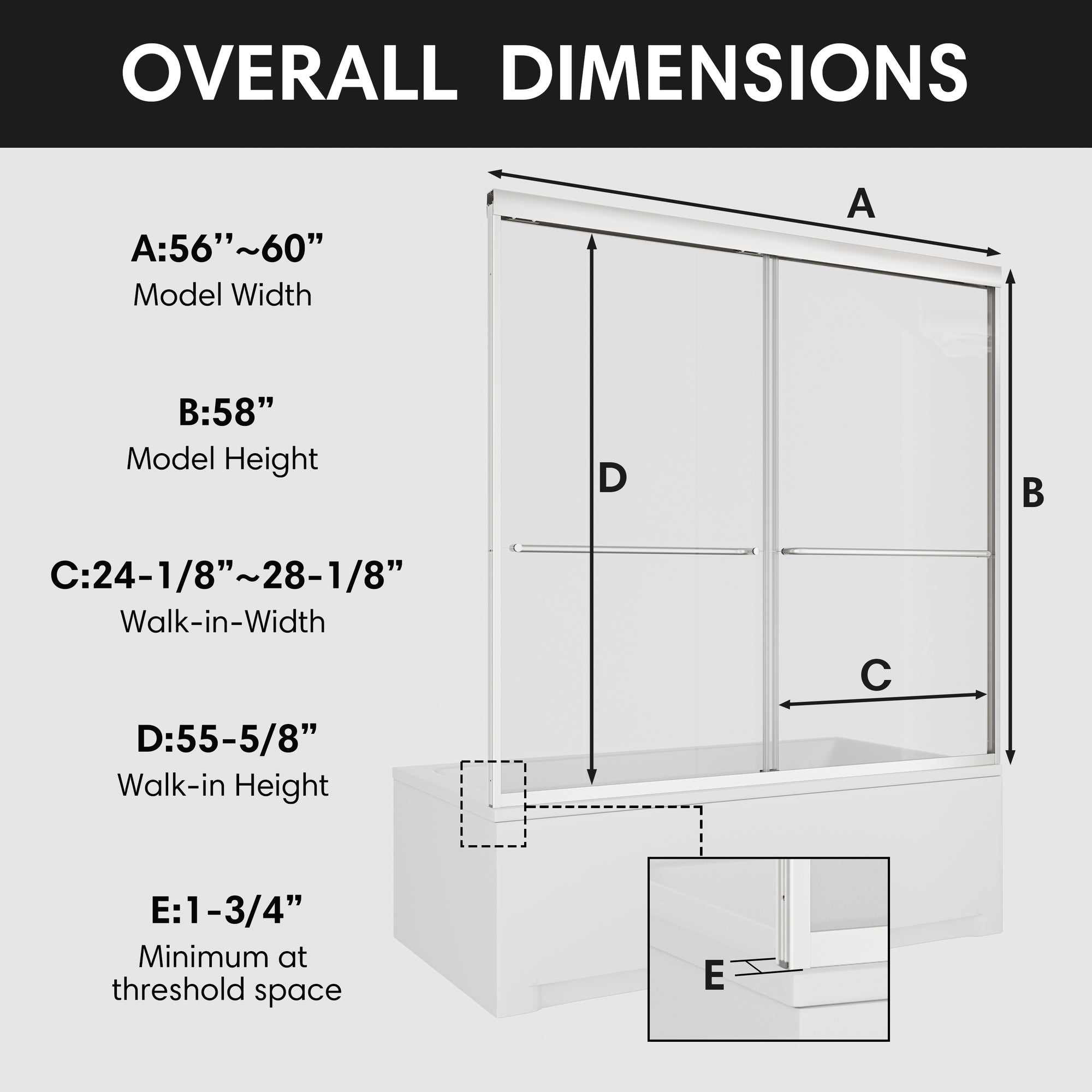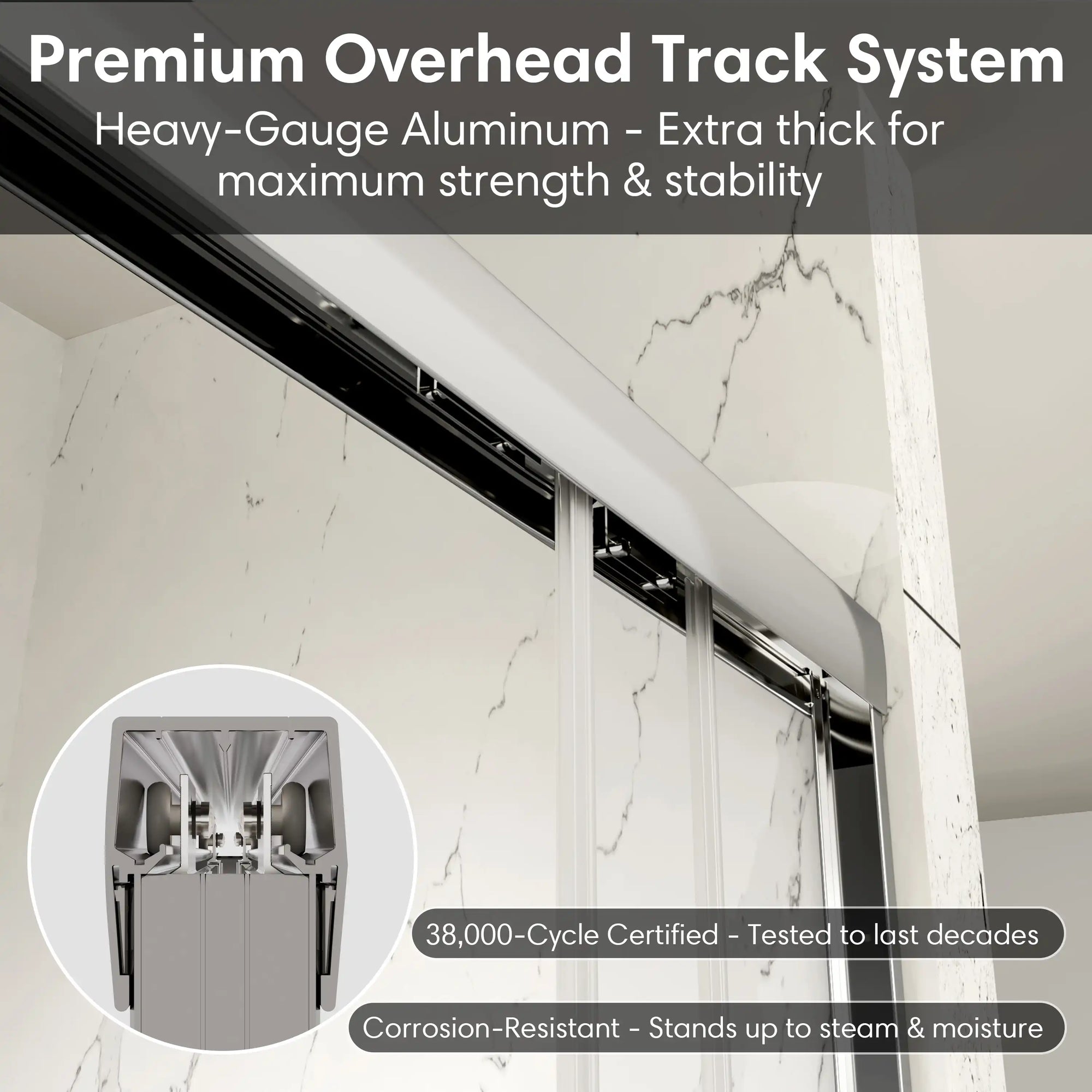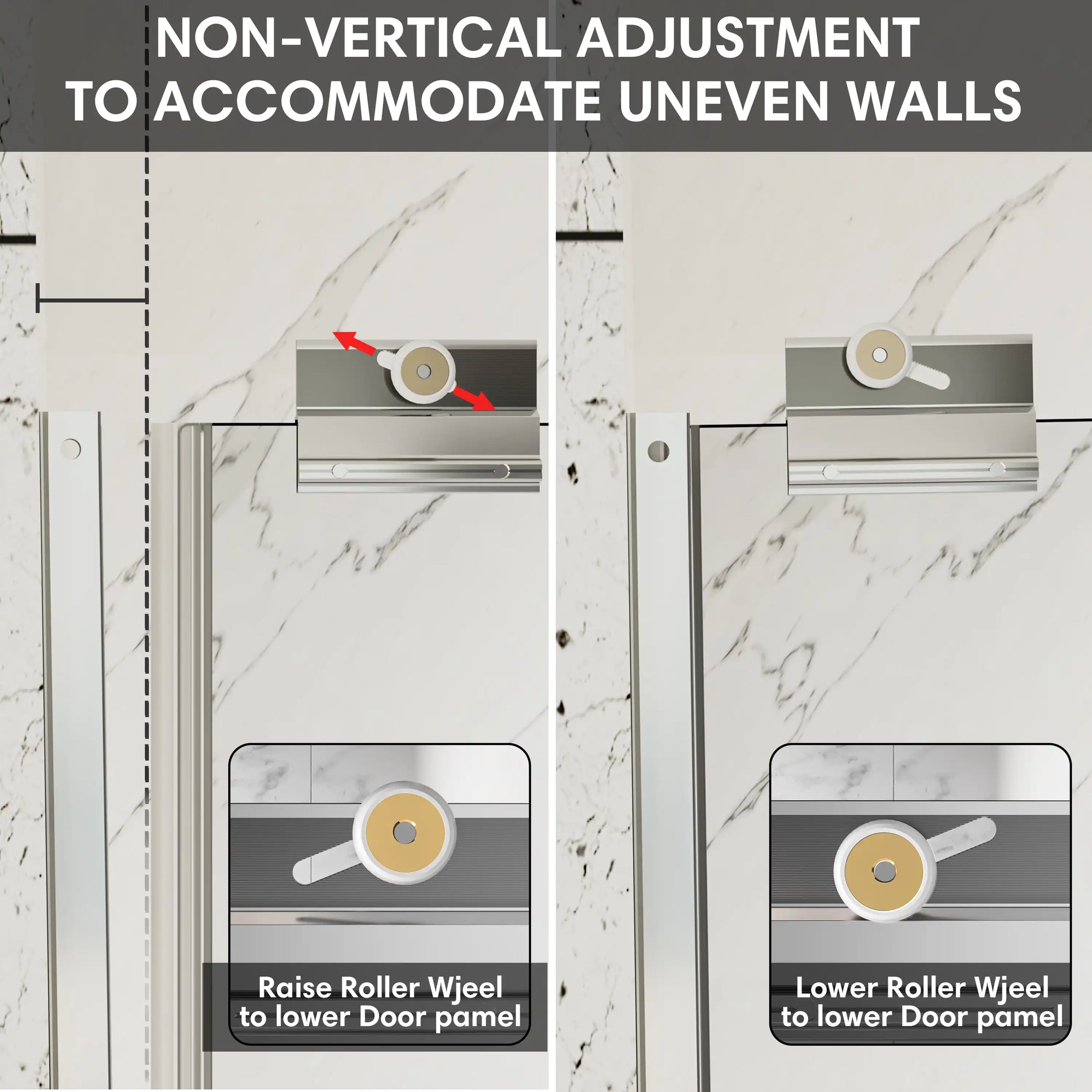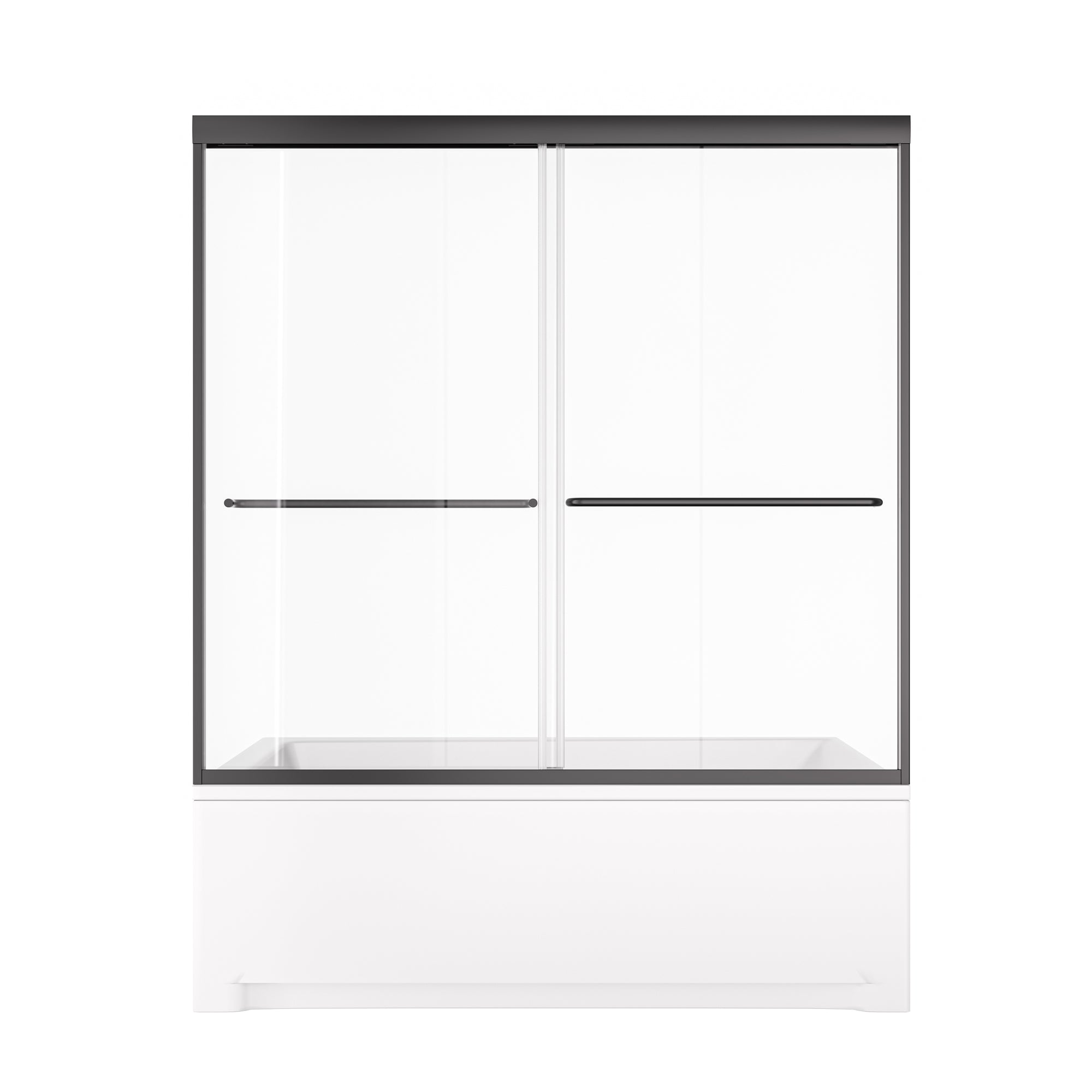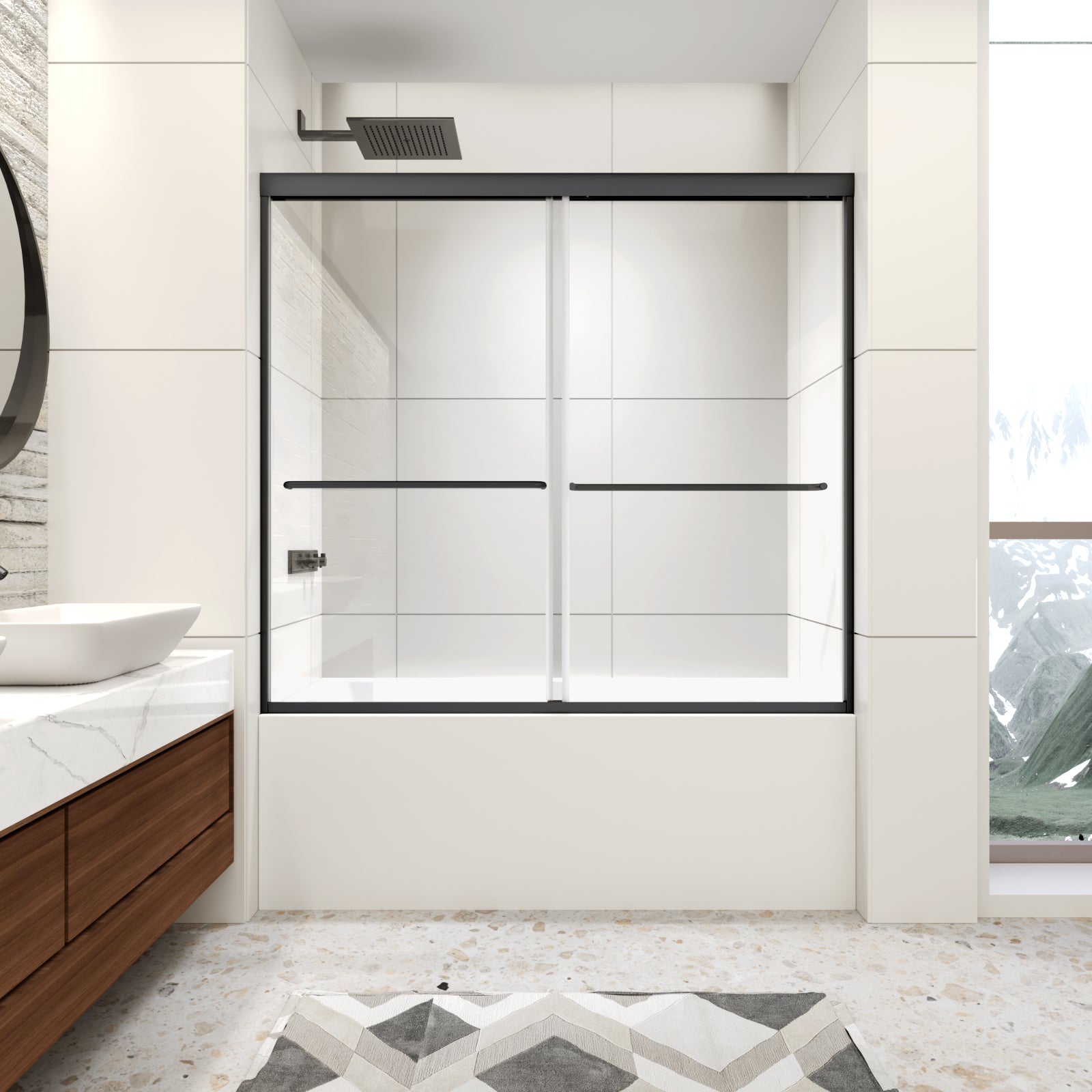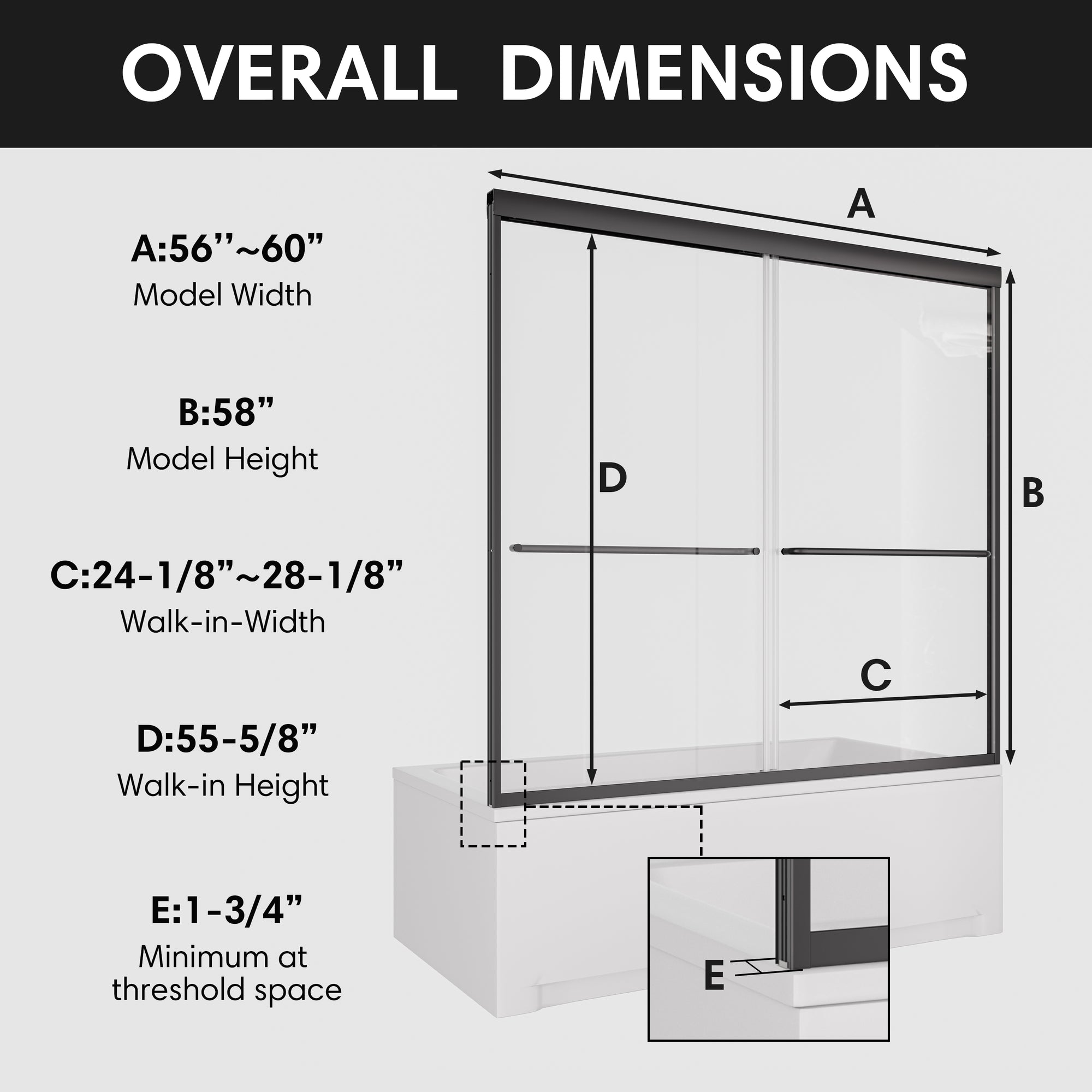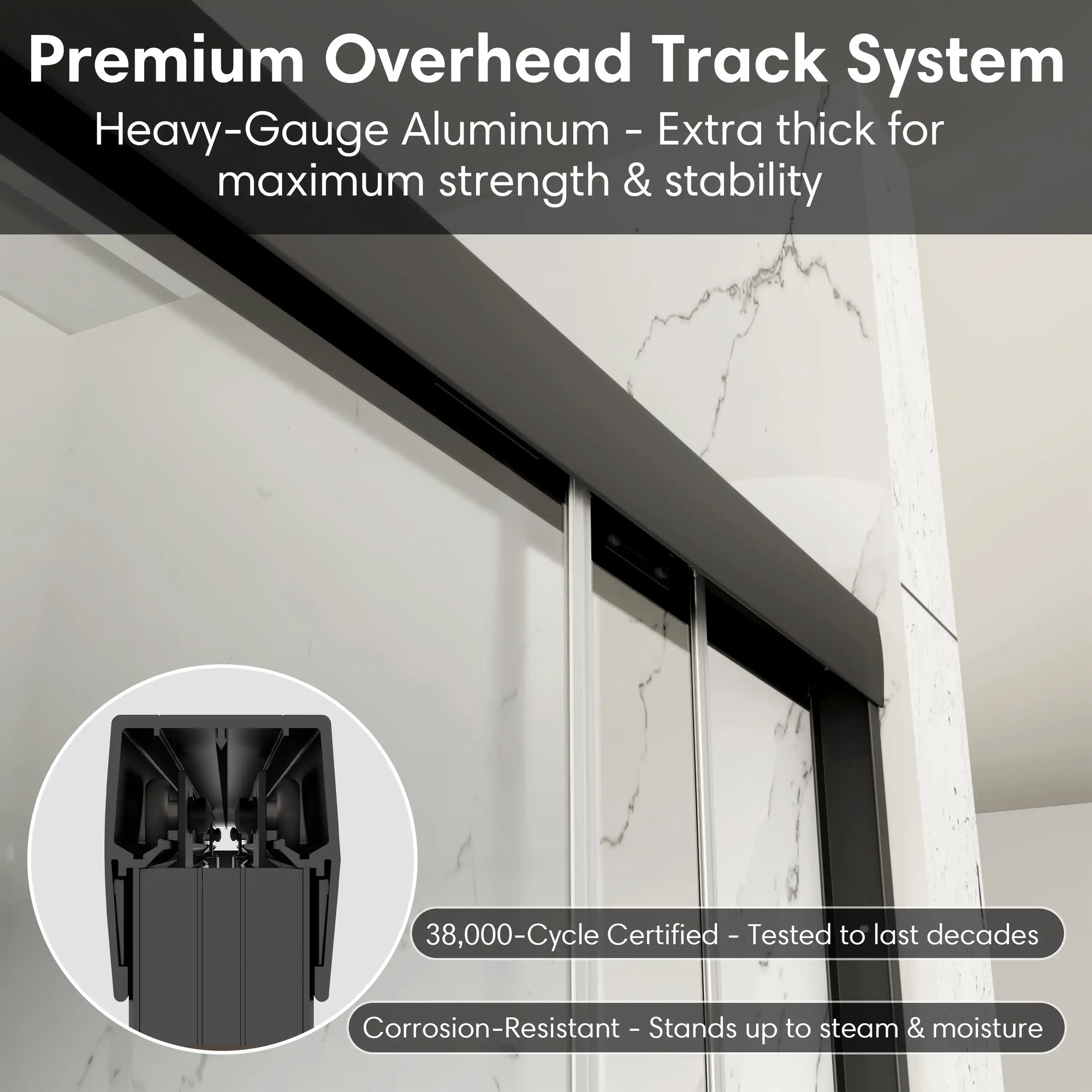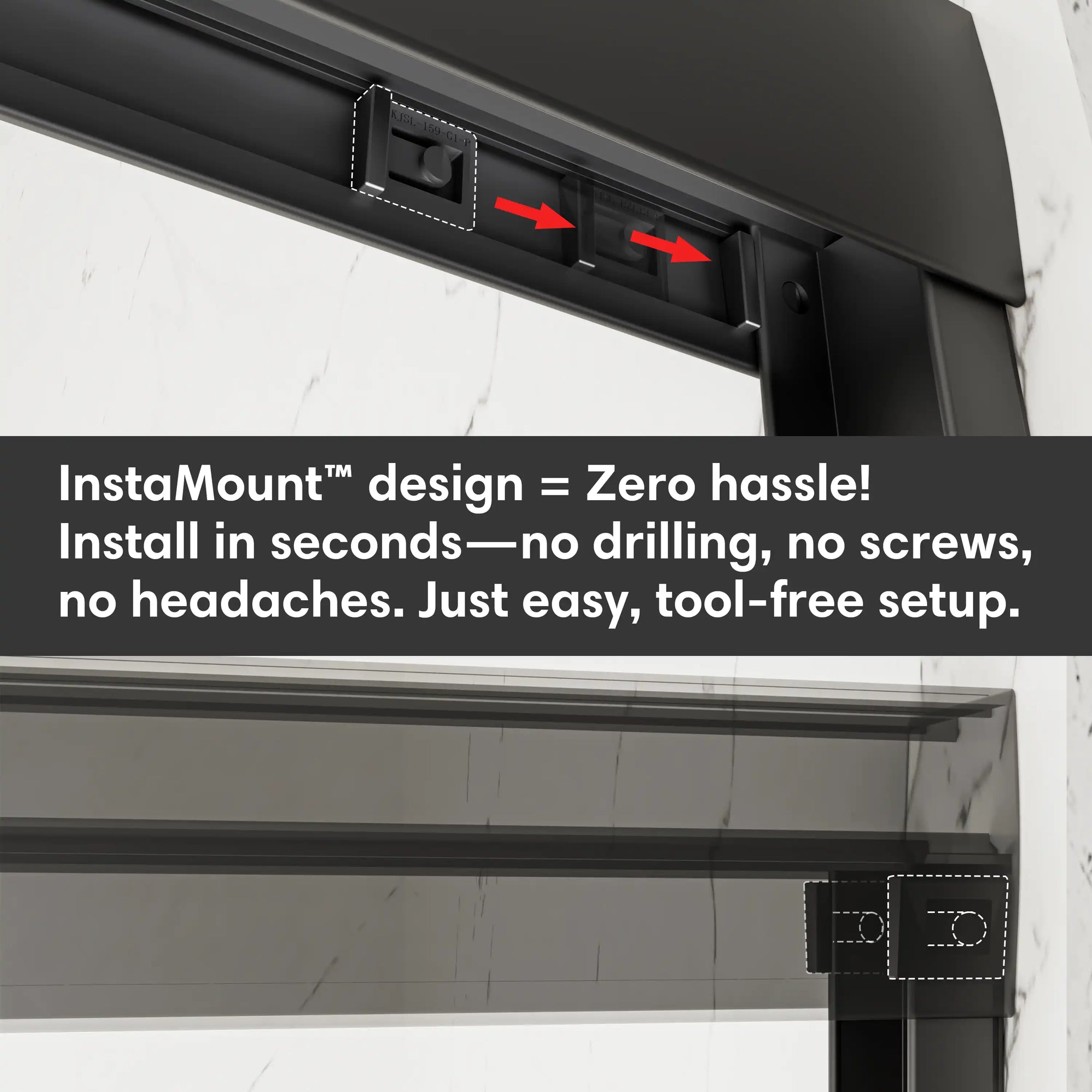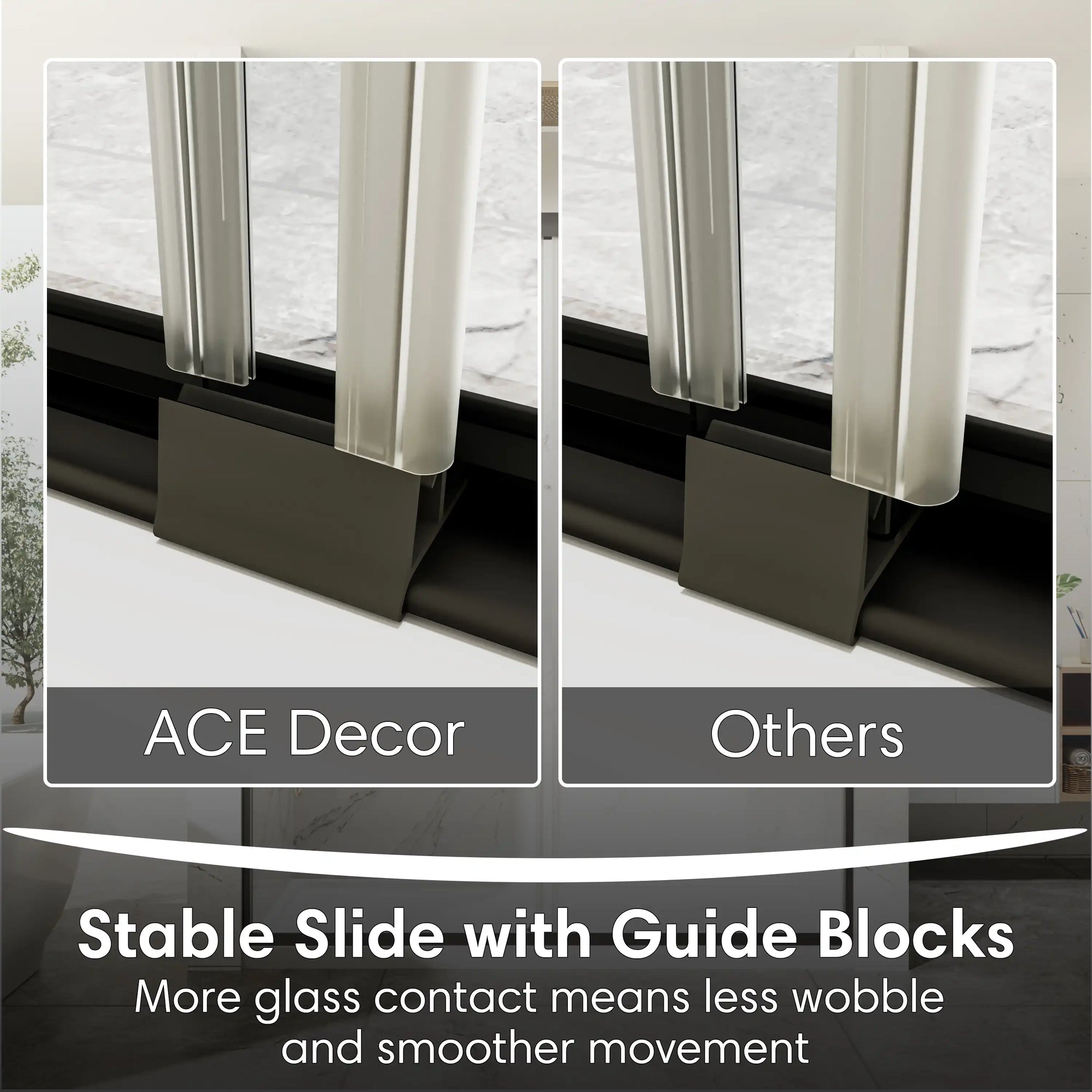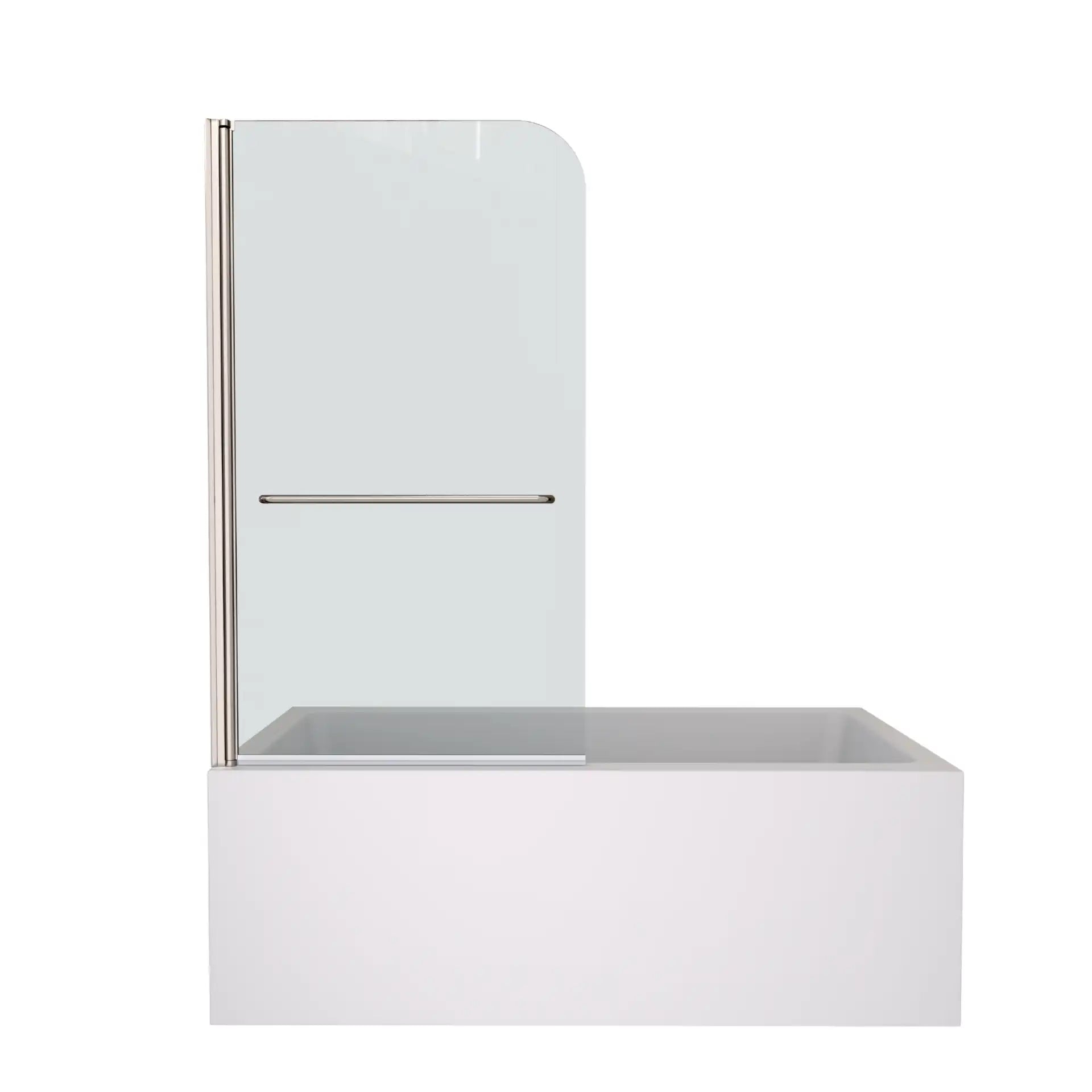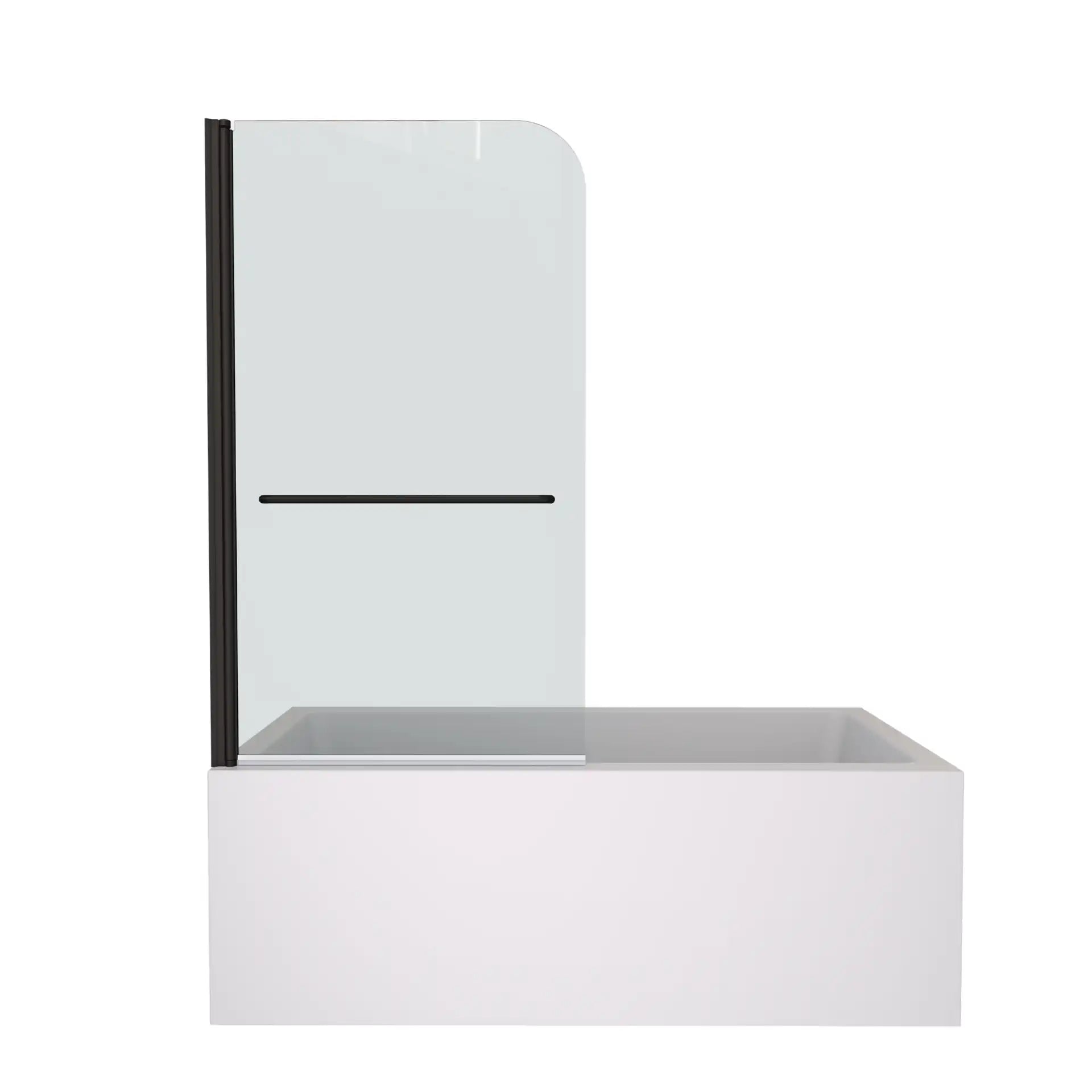Table of Contents
- What Is a Soaking Tub—and Why Size Matters
- Soaking Tub Dimensions by Style
- How to Choose the Right Soaking Tub Size for Your Space
- Space Planning: Matching Tub Dimensions to Bathroom Size
- FAQ: Homeowners Often Ask
- Final Thoughts: The Perfect Soak Starts with the Right Dimensions
- Related Articles
When it comes to creating a bathroom that feels like a private retreat, the right soaking tub dimensions make all the difference. Too small, and you can't fully unwind; too big, and it overwhelms your space—or your water heater. The perfect size strikes a balance between comfort, functionality, and visual harmony, turning an ordinary bath into an everyday escape.
Over the years, I've worked with many homeowners who thought any tub that "fit" their bathroom would do—until they experienced the difference that proper depth, width, and length can make. A well-proportioned soaking tub doesn't just elevate the look of your bathroom; it changes how you start and end your day. Imagine a tub that supports your posture, lets you stretch out completely, and keeps the water at just the right temperature for as long as you want to stay. That's what the right dimensions can achieve.
For homeowners planning a bathroom renovation or upgrade, understanding soaking tub sizes isn't just a technical detail—it's the foundation of your design choices. The right dimensions determine how relaxing your soak feels, how efficiently your space functions, and even how much you'll enjoy maintaining your new fixture over time.
In this guide, we'll walk through everything you need to know—from standard soaking tub sizes and depth comparisons to space-planning tips and real-world dimension examples—so you can confidently choose the perfect tub for your lifestyle, space, and aesthetic.
What Is a Soaking Tub—and Why Size Matters
A soaking tub is more than just a deeper version of a regular bathtub—it's the centerpiece of a true relaxation ritual. Designed for full-body immersion, it allows you to sink in comfortably, letting warm water cover your shoulders and melt away stress. Unlike traditional tubs, which are typically about 14–17 inches deep, soaking tubs often range between 18–24 inches, with some luxury models reaching up to 25–27 inches for an even deeper soak.
This extra depth transforms the bathing experience. Instead of just sitting partially submerged, you can recline naturally and enjoy a sense of weightlessness that mimics a spa. The shape and dimensions of a soaking tub also tend to prioritize ergonomics: curved backs, elevated ends for neck support, and enough interior length to stretch your legs without feeling cramped.
But here's where the dimensions really matter — not just for comfort, but for the overall balance of your bathroom.
- Comfort: The right tub depth ensures you're fully immersed without having to constantly adjust your posture. Too shallow, and you lose that sense of calm; too deep, and it may become awkward to get in and out.
- Space: Choosing the wrong length or width can throw off your entire bathroom layout. A tub that's just a few inches too large can crowd vanities or block pathways, while one that's too small may feel underwhelming in a spacious layout.
- Efficiency: A well-sized soaking tub fills quickly, retains heat effectively, and conserves both water and energy.
- Aesthetics: Proportion plays a visual role, too. A tub that matches your room's scale looks intentional—elevating the space from functional to spa-like.
In short, soaking tub dimensions define the experience. They determine how comfortable your soak feels, how easy it is to maintain, and how harmonious your bathroom design looks overall. Whether you're working with a compact guest bath or a master suite with extra floor space, knowing the right dimensions will help you create a bathroom that's not only beautiful, but built for daily relaxation.
Soaking Tub Dimensions by Style
When shopping for a soaking tub, style isn't just about looks—it directly affects the dimensions, depth, and comfort level of your soak. Different designs are built for different spaces and experiences. Below, I'll walk you through the most common soaking tub styles on the market, their typical dimensions, and what type of bathroom each suits best.

1. Freestanding Soaking Tubs
Typical Dimensions: 60–72" L × 30–34" W × 20–22" D
Best For: Medium to large bathrooms
Freestanding tubs are the centerpiece of modern bathroom design. They don’t require walls or built-in structures, which gives you freedom to place them almost anywhere—from in front of a window to the middle of your bathroom floor. Their sculptural shapes and clean lines make them a favorite among homeowners upgrading to a luxury, spa-inspired space.
Today’s freestanding tubs range from minimalist ovals to classic clawfoot and slipper silhouettes. If comfort is your priority, look for ergonomic contouring and a 21–23 inch depth, which offers full shoulder immersion without excessive water use. Acrylic is the most popular material choice—it’s lightweight, retains heat well, and is easy to maintain.
Pro Tip: Freestanding tubs look best when the surrounding space is at least 6–8 inches wider than the tub on all sides. This ensures a balanced visual layout and enough room for cleaning and plumbing access.

2. Alcove Soaking Tubs
Typical Dimensions: 60" L × 30–32" W × 18–20" D
Best For: Standard-sized bathrooms or combined bath/shower setups
An alcove soaking tub fits into a three-wall enclosure—one of the most space-efficient setups you’ll find. These are the go-to choice for many American households because they maximize floor area while still providing a relaxing soak.
Although alcove tubs are slightly shallower than freestanding designs, many models now feature deeper wells (up to 20 inches) for a true soaking experience. They also pair beautifully with sliding glass doors or shower curtains, making them a practical yet elegant solution for everyday family use.
Ace Decor Tip: If you’re renovating an existing alcove, measure carefully from stud to stud—not tile to tile—to ensure a perfect fit.

3. Drop-In Soaking Tubs
Typical Dimensions: 66–72" L × 32–36" W × 20–24" D
Best For: Custom tile surrounds, decks, or elevated platforms
Drop-in tubs are installed into a pre-built frame or “deck,” which means you can customize the outer shape, tile finish, and height. This style offers flexibility—perfect for homeowners who want to integrate their soaking tub into a larger bathroom design.
Because the tub sits within a frame, drop-in models often have deeper basins (22–24 inches) and offer exceptional heat retention. You can also add features like armrests, LED lighting, or whirlpool jets for a more spa-like experience.
While installation requires more planning and carpentry, the finished look feels bespoke and cohesive—especially in bathrooms with marble or quartz surrounds.

4. Corner Soaking Tubs
Typical Dimensions: 48–60" L × 48–60" W × 20–23" D
Best For: Small or awkwardly shaped bathrooms
Corner soaking tubs make clever use of otherwise wasted space. Their triangular or heart-shaped forms tuck neatly into a corner, freeing up walking space while still offering a comfortable, deep soak.
Modern corner tubs can be surprisingly luxurious—some feature built-in seating or dual-person layouts, and many include hydrotherapy options. A 21–23 inch depth is typical for this style, with widths large enough for reclining without stretching out fully.
They’re a great fit for master baths with angled walls or guest bathrooms that need an eye-catching but practical upgrade.

5. Japanese Soaking Tubs (Ofuro)
Typical Dimensions: 45–54" L × 28–34" W × 24–28" D
Best For: Compact bathrooms or zen-inspired remodels
The traditional Japanese ofuro tub is built for one purpose—deep, meditative soaking. These tubs are shorter and much deeper than Western designs, allowing you to sit upright with water covering your shoulders.
Because of their compact footprint, Japanese soaking tubs are perfect for urban homes, smaller bathrooms, or spa-style renovations where space is limited but comfort is non-negotiable.
Materials often include acrylic, wood, or composite stone, each bringing a distinct aesthetic. For a modern American home, acrylic or solid-surface designs strike the right balance between durability, warmth retention, and maintenance ease.

6. Walk-In Soaking Tubs
Typical Dimensions: 48–60" L × 28–32" W × 36–40" H
Best For: Accessibility, safety, and comfort
Walk-in tubs are designed for homeowners who want a safer bathing experience without compromising comfort. They feature a watertight door, built-in seat, and low step-in height for easy entry. Despite their compact footprint, walk-in soaking tubs can still offer deep soaking depths up to 30 inches—enough to submerge comfortably while seated.
These tubs are ideal for aging-in-place remodels or multi-generational households. Many include air jets or whirlpool features, slip-resistant surfaces, and quick-drain technology.

7. Slipper & Double-Slipper Tubs
Typical Dimensions:
Best For: Elegant master bathrooms and couples
A slipper soaking tub is easily recognized by its raised backrest—an ergonomic feature that supports your shoulders and neck while soaking. A double slipper raises both ends, creating a symmetrical, romantic design perfect for shared spaces.
These tubs tend to be deeper and more sculptural, offering both comfort and dramatic visual appeal. If your goal is to make the tub a centerpiece of your bathroom, this style delivers.

8. Whirlpool & Air-Jet Soaking Tubs
Typical Dimensions: 60–72" L × 32–38" W × 20–24" D
Best For: Large bathrooms or spa-inspired renovations
While not all whirlpool tubs are technically “soaking tubs,” many homeowners choose hybrid models that combine the deeper basin of a soaking tub with therapeutic jets. These are excellent for relieving tension, improving circulation, and creating a home spa experience.
Keep in mind that whirlpool tubs require additional electrical and plumbing connections, so installation should always be handled by a licensed professional.
Quick Comparison: Soaking Tub Dimensions by Style
| Style | Length (in) | Width (in) | Depth (in) | Bathroom Type |
|---|---|---|---|---|
| Freestanding | 60–72 | 30–34 | 20–22 | Medium–Large |
| Alcove | 60 | 30–32 | 18–20 | Standard |
| Drop-In | 66–72 | 32–36 | 20–24 | Custom/Designer |
| Corner | 48–60 | 48–60 | 20–23 | Small–Medium |
| Japanese (Ofuro) | 45–54 | 28–34 | 24–28 | Compact |
| Walk-In | 48–60 | 28–32 | 36–40 (height) | Accessible |
| Slipper | 59–75 | 30–36 | 22–25 | Large |
| Whirlpool | 60–72 | 32–38 | 20–24 | Large |
How to Choose the Right Soaking Tub Size for Your Space
Selecting the right soaking tub dimensions isn't just about matching numbers—it's about how you live, how your space flows, and how you want your bathroom to feel every day.
A well-sized tub should look balanced within your layout, fill comfortably within your water system's capacity, and suit the way you prefer to bathe—whether that's a quick nightly unwind or a weekend-long retreat.
After years of working with homeowners on bathroom remodels, I've found that choosing the right soaking tub size always comes down to three key factors: space, water capacity, and user comfort.
1. Measure Your Available Space
Before you fall in love with a specific design, measure your bathroom carefully—both the area where the tub will sit and the path it must travel to get there.
It's surprisingly common for homeowners to buy a tub that fits the bathroom but not the hallway or doorframe leading in!
Here's what to keep in mind:
- Overall footprint: Measure from wall to wall, leaving at least 4–6 inches of clearance around freestanding tubs for cleaning and plumbing access.
- Plumbing layout: Verify where your drain and faucet are positioned; this affects which tub types (left-hand, right-hand, or center drain) are compatible.
- Height and reach: If your tub is placed under a window or shelf, ensure there's enough room to step in and out safely.
For small or medium bathrooms (under 100 sq. ft.), a compact or standard soaking tub—around 54–66 inches long—often provides the perfect balance between comfort and proportion. Larger spaces (120+ sq. ft.) can easily accommodate oversized freestanding models up to 72 or even 78 inches.
Use masking tape or cardboard templates to mark the tub’s outline on your floor. It’s an easy way to visualize how much space the tub truly occupies once installed.
2. Check Your Water Capacity and Heating System
Depth is one of the biggest draws of a soaking tub—but with greater depth comes greater water demand.
A typical deep soaking tub holds 80–110 gallons, nearly double that of a standard bath. That extra water weight and heating requirement can impact both your utility bills and your home's plumbing system.
Here's what to consider:
- Water heater size: Make sure your water heater can deliver at least 70–80% of your tub's total capacity in hot water. For larger tubs (72"+), a 75–80 gallon heater is often recommended.
- Water pressure: Deeper tubs need stronger water flow to fill efficiently. If your current pressure is low, consider upgrading your fixtures or valves.
- Drainage system: Bigger tubs mean more water to drain—so ensure your system can handle the output without backups.
Choosing a tub that aligns with your plumbing capacity ensures a smooth, consistent soak every time, without running out of warm water halfway through.
If you love the look of an oversized freestanding tub but have a smaller water heater, consider an insulated acrylic tub. It retains heat longer and helps you save energy between refills.
3. Consider Who Will Use It
A soaking tub should fit your body as perfectly as it fits your space.
Before committing to a size, think about the primary users—height, mobility, and comfort preferences all play a role.
- Height: If you're taller than 6 feet, look for a tub at least 70 inches long and 22 inches deep for full-body submersion.
- Shared use: For couples, a double-ended or slipper-style tub provides equal back support on both sides.
- Mobility needs: For aging homeowners or those with limited mobility, walk-in or lower-profile soaking tubs with built-in seats and handrails are safer and more practical.
- Kids or guests: A compact 54–60 inch alcove tub may be more suitable—it fills quickly and is easier to clean after frequent use.
The key is to imagine the tub as part of your daily rhythm: Will you be soaking for 10 minutes after work, or indulging in a 40-minute weekend spa routine? Your answer determines the ideal depth and shape.
When testing a tub in person, sit inside before you buy. Your shoulders should be comfortably below the rim when seated, and your legs should extend naturally without bending sharply.
Quick Sizing Guidelines
| User Height | Ideal Tub Length | Recommended Depth | Experience Level |
|---|---|---|---|
| Under 5'6" | 54–60" | 18–20" | Compact soak |
| 5'7"–6'0" | 60–70" | 20–22" | Deep relaxation |
| 6’0”+ | 70–78" | 22–24" | Full immersion spa soak |
Bringing It All Together
The best soaking tub dimensions are the ones that balance space, comfort, and practicality.
A properly sized tub feels inviting without overpowering your bathroom, fills quickly without straining your water heater, and supports your body naturally during every soak.
Whether you're remodeling a compact guest bath or building a spa-style primary suite, choosing with precision today ensures a lifetime of comfort, relaxation, and style tomorrow.
Space Planning: Matching Tub Dimensions to Bathroom Size
Finding the right soaking tub dimensions begins with understanding your bathroom's scale.
A tub should look intentional in your space—not squeezed into a corner or floating awkwardly in an oversized room. Good spatial planning ensures that your soaking tub feels harmonious with the rest of the layout, allowing you to move comfortably and maintain a clean, balanced look.
Every bathroom—whether compact, mid-sized, or expansive—has its own ideal range of tub dimensions. Below, I'll share how to choose the perfect size based on your bathroom's footprint and layout.
Small Bathrooms (<70 sq ft): Make Every Inch Count
If your bathroom is on the smaller side, you can still enjoy the comfort of a full soak with a little smart planning. The key is depth over length—a shorter tub that's deeper provides the same relaxing experience without consuming extra floor space.
Ideal Dimensions:
- Length: 54–60 inches
- Width: 28–30 inches
- Depth: 20–24 inches
Best Styles:
- Japanese soaking tubs (Ofuro): Compact, upright, and perfect for deep immersion.
- Corner tubs: Maximize space by tucking neatly into an unused corner.
- Compact freestanding tubs: Offer a luxury feel without the footprint of a full-sized model.
Design Tips:
- Place your tub along the shortest wall to free up open space.
- Use light-colored tiles and vertical lines to visually enlarge the area.
- Consider wall-mounted faucets and open shelving instead of bulky vanities.
A 54-inch deep soaking tub can feel just as luxurious as a 72-inch model if the water depth reaches your shoulders. Choose wisely, not bigger.
Medium Bathrooms (70–120 sq ft): Balanced and Flexible
For most suburban homes, this is the "sweet spot.” You have enough room to explore freestanding or alcove soaking tubs, allowing you to balance comfort and design freedom. The goal here is proportion—your tub should complement other fixtures like the vanity and shower without dominating the layout.
Ideal Dimensions:
- Length: 60–72 inches
- Width: 30–34 inches
- Depth: 20–22 inches
Best Styles:
- Freestanding tubs: Great as a visual centerpiece.
- Alcove tubs: Ideal for families or shared bathrooms.
- Drop-in tubs: Perfect if you want a custom tiled surround or deck-mounted faucet.
Design Tips:
- Leave 4–6 inches of space around freestanding tubs for cleaning and plumbing access.
- Pair a medium-size soaking tub with neutral tones or stone finishes for a spa-like atmosphere.
- Center your tub beneath a window or pendant light to create a serene focal point.
For bathrooms around 100 sq ft, a 66-inch oval soaking tub offers an ideal balance of immersion depth and visual proportion.
Large Bathrooms (>120 sq ft): A Stage for Statement Pieces
A large bathroom gives you freedom—the kind that allows you to transform it into a personal spa retreat. Here, you can choose oversized soaking tubs or even combine multiple bathing elements (like a separate shower and freestanding tub) without worrying about space constraints.
Ideal Dimensions:
- Length: 72–78 inches or more
- Width: 34–40 inches
- Depth: 22–25 inches
Best Styles:
- Oversized freestanding tubs: Make a luxurious visual statement.
- Double slipper tubs: Ideal for couples who enjoy side-by-side soaking.
- Whirlpool or air-jet tubs: For spa-level hydrotherapy and deep relaxation.
Design Tips:
- Center your tub to create symmetry and an open, airy feel.
- Complement the scale with floor-mounted faucets or natural stone finishes.
- Consider adding a wood or marble platform for elevation and drama.
In a spacious layout, the right tub acts as architectural art—choose a sculptural silhouette or textured finish to define the mood of your entire bathroom.
How to Find the Perfect Balance
Think of your soaking tub dimensions as part of a bigger design equation—one that includes floor plan, traffic flow, and how you actually use your bathroom.
A small tub in a large room may look lost, while an oversized tub in a tight layout can feel cramped and awkward. The best bathrooms feel intentional—where size, proportion, and comfort align seamlessly.
If you're torn between two sizes, always choose the one that allows slightly more space for movement. You'll thank yourself later when cleaning, maintaining, or adding decor around the tub.
FAQ: Homeowners Often Ask
1. What’s the ideal soaking tub depth for real comfort?
2. How long should a soaking tub be for taller bathers?
3. Can a soaking tub fit in a small bathroom?
4. How much water does a soaking tub usually hold?
5. Do soaking tubs need special plumbing or installation?
6. What’s the difference between soaking depth and total depth?
7. What materials are best for soaking tubs?
8. How much space should I leave around my soaking tub?
9. Are soaking tubs safe for older adults?
10. What’s the best soaking tub size for two people?
Final Thoughts: The Perfect Soak Starts with the Right Dimensions
Finding your ideal soaking tub dimensions is more than comparing measurements—it's about creating a space that feels calm, balanced, and built around the way you unwind.
When the proportions are right, every soak becomes effortless: the water stays warm longer, the layout feels open and intentional, and your bathroom transforms from functional to restorative.
Whether you're upgrading a compact guest bath or designing your dream primary suite, the key is to match size with lifestyle—depth for relaxation, length for comfort, and materials that stand the test of time.
At Ace Decor, we help homeowners like you find that perfect harmony between design, performance, and peace of mind. Our curated selection of soaking tubs combines modern craftsmanship, durable materials, and easy installation—so you can soak deeper, relax longer, and love your bathroom more every day.
Related Articles
Looking to plan your next bathroom upgrade? Explore these related guides for more expert tips on tub selection, installation, and design inspiration.
- "The Timeless Charm of Japanese Wooden Bathtubs: A Blend of Tradition, Design, and Tranquility"
- "Transform Your Bathroom with Luxury Spa Shower Systems: The Ultimate Guide to Elevating Your Home Experience"
- "Top 5 Bathtub Door Ideas for Modern Bathrooms (And Why They Redefine Functional Design)"
- "Why Your Bathroom Layout is Begging for a Corner Bathtub (And How to Listen) "
- "More Than Just a Mirror: The Hidden Superpowers of a Lighted Medicine Cabinet"
- "Bathroom Vanity Magic: How the Right Sink Cabinet & Mirror Combo Can Instantly Elevate Your Space"
- "How to Choose the Right Faucet for Your Bathroom Vanity: A Complete Buyer's Guide"
- "Rainfall to High-Tech – The Innovations Defining the Future of Luxury Showers"
- "Why Barn Door Washrooms Are the Hottest Trend in Bathroom Design "
- "Double Your Storage, Double Your Style: Why a 3-Mirror Bathroom Cabinet is a Game-Changer"
